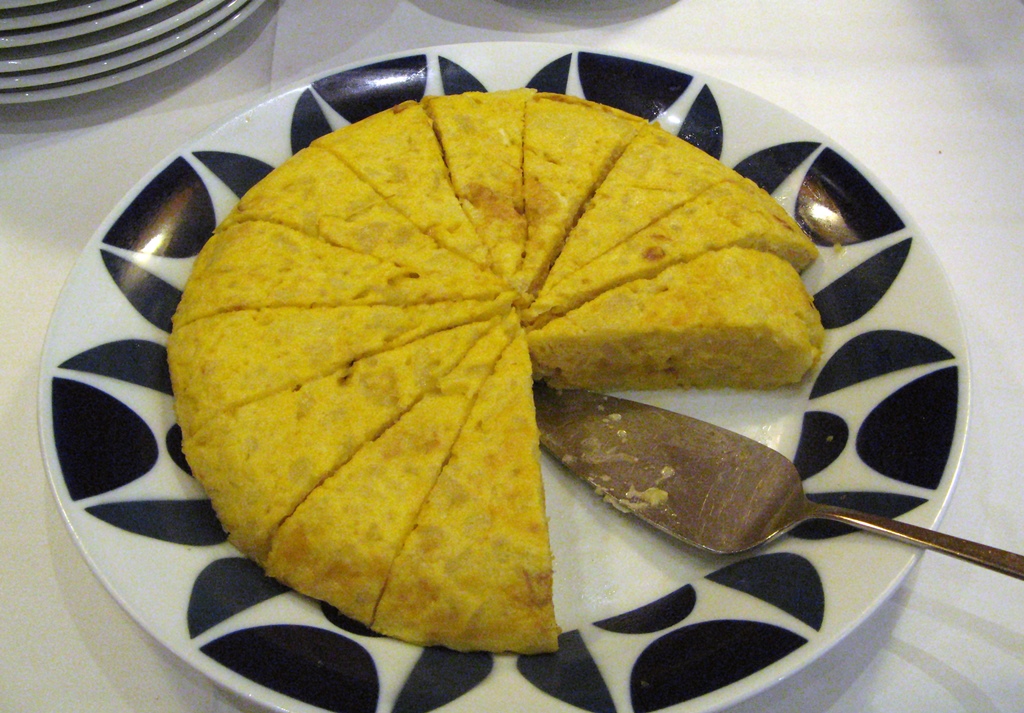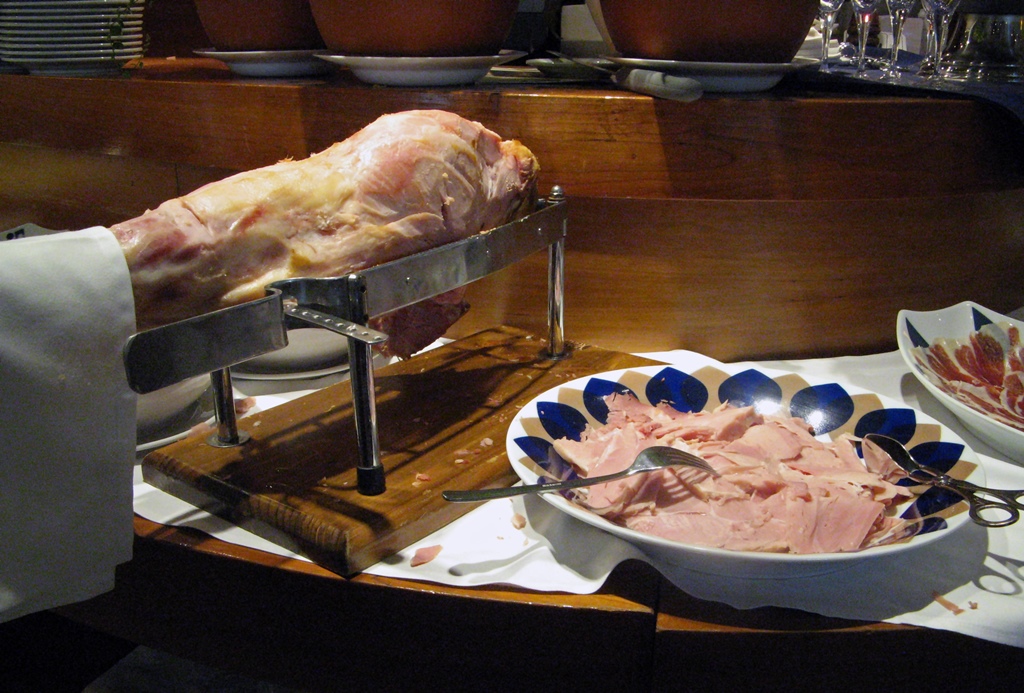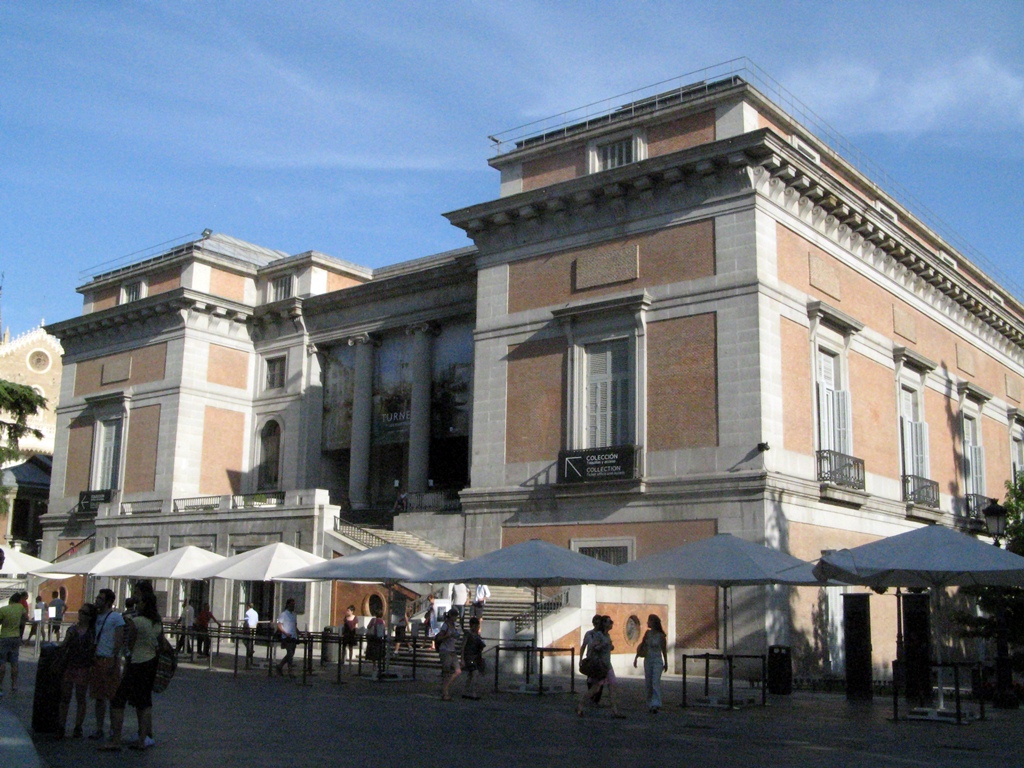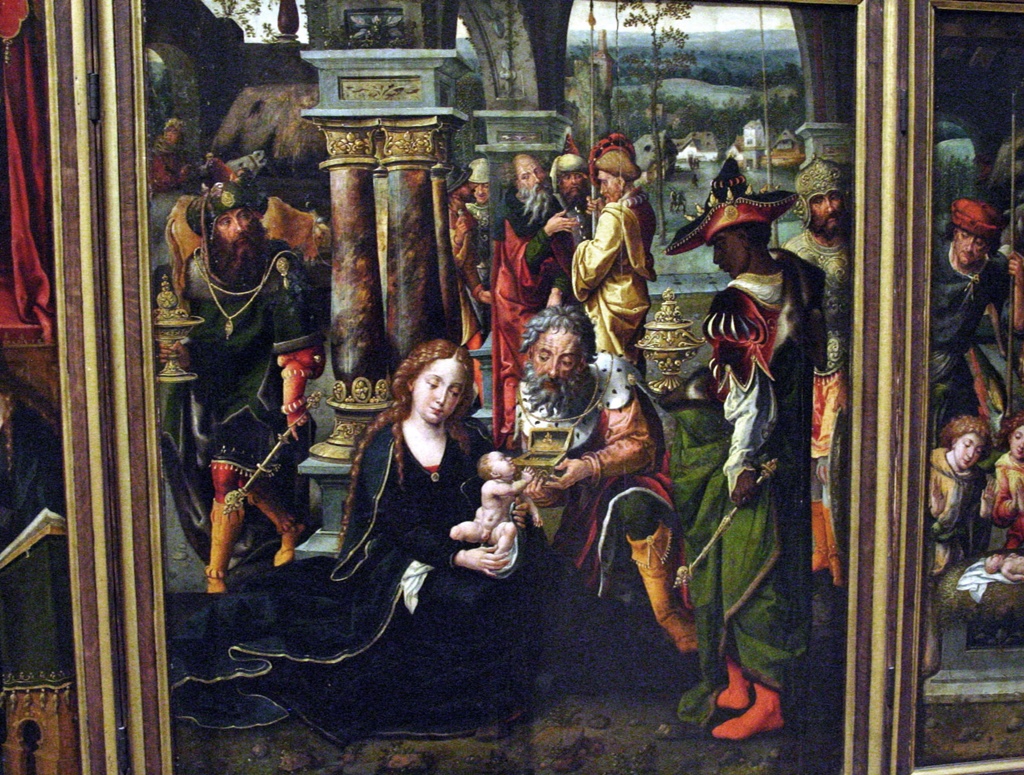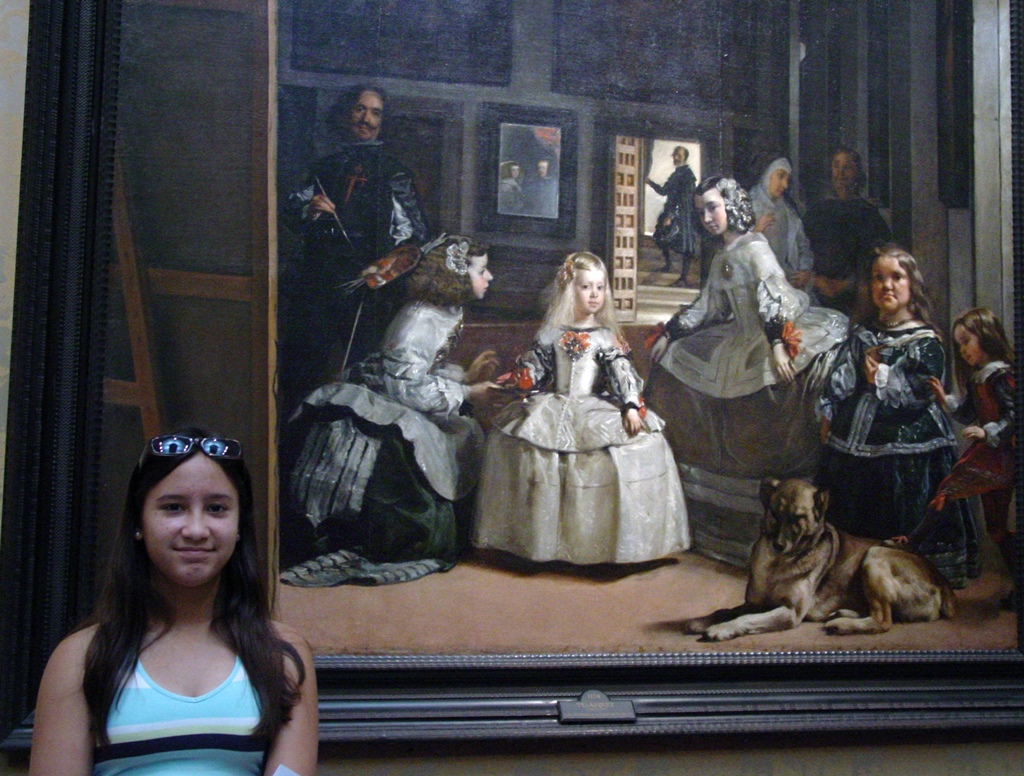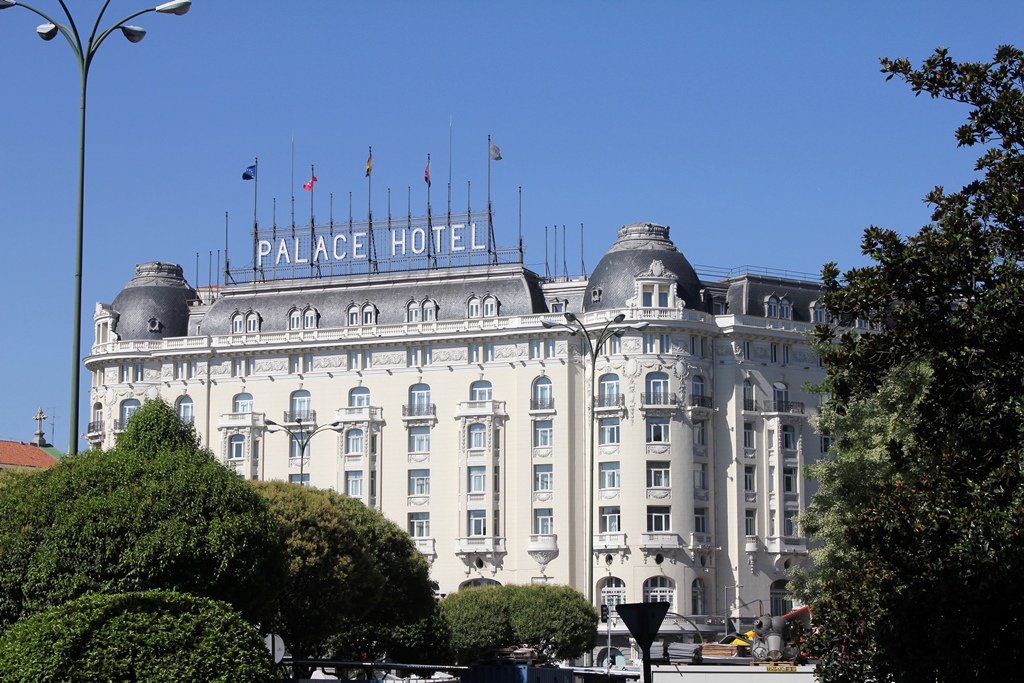We began the next day at the Hotel Preciados breakfast buffet, which was included in the room rate. This buffet was easily the best of the
trip, with an assortment of breads, pastries and flans.
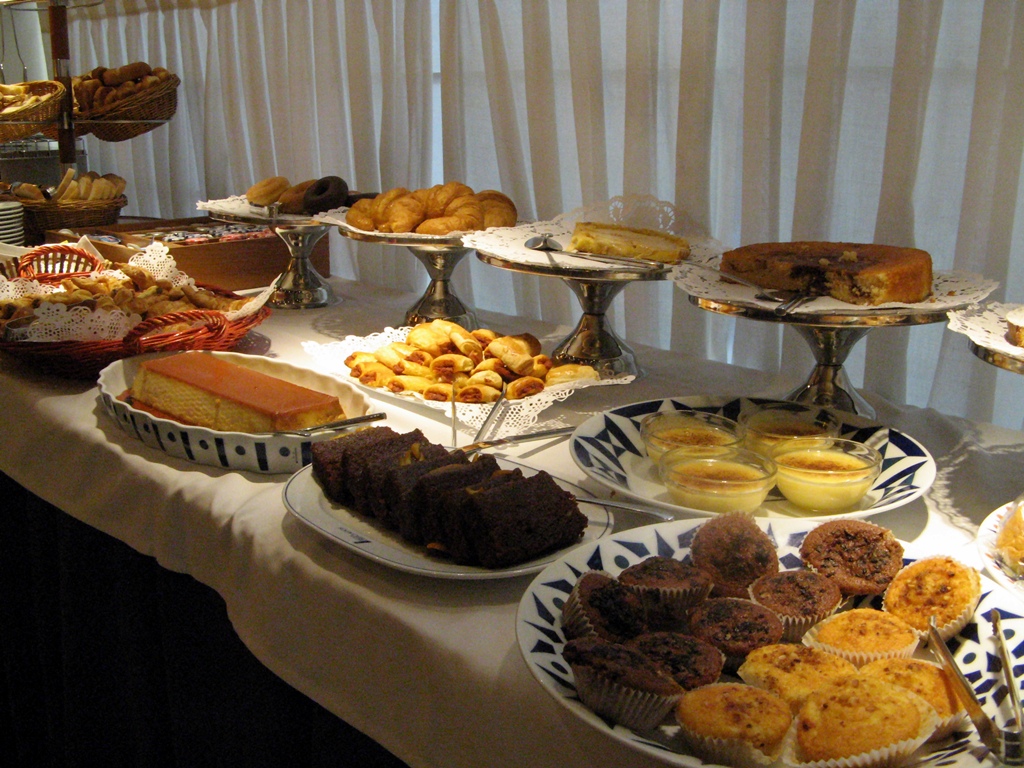
Breads, Pastries and Flans
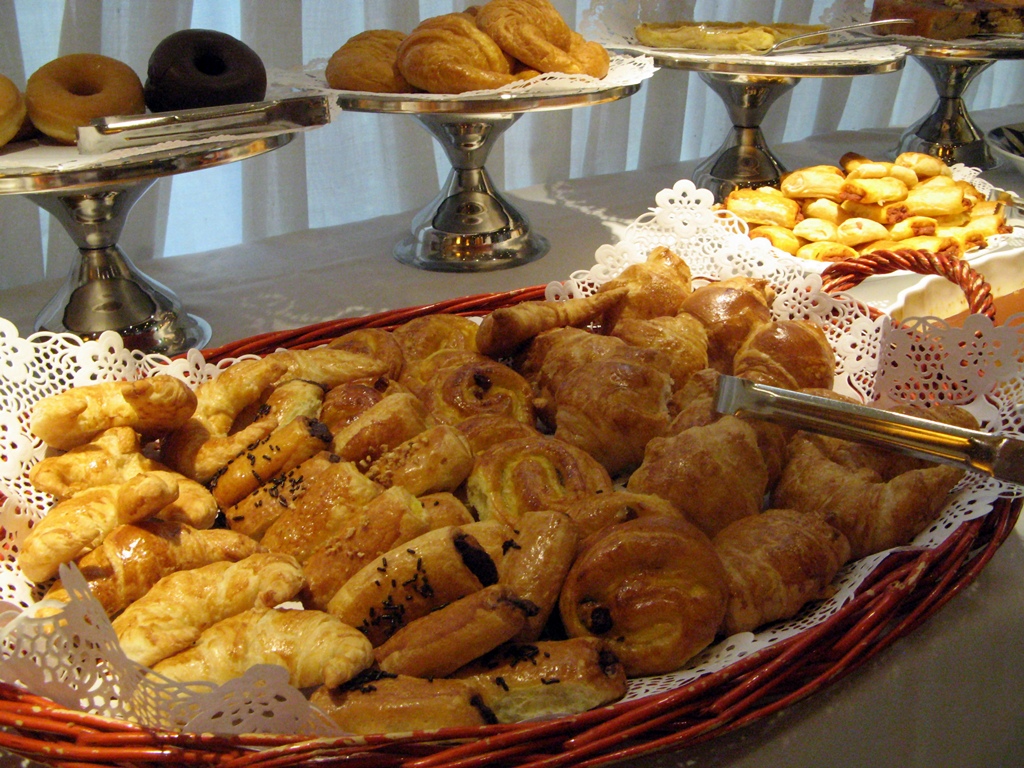
Breads and Pastries
They also had a tortilla, which is not what you'd expect. Apparently all Spanish-speaking countries have their own interpretations of
what a tortilla is. In the U.S. we’re used to the Mexican version, that thin round flat thing, soft or crispy, made from corn or
flour. You could assemble one from the right flattened arrangement of half a dozen Doritos (or you could if they wouldn't keep
breaking). In Spain a tortilla is a bulgy round omelet sort of thing filled with potatoes and possibly other ingredients. (Maybe if
you let them get stale enough…)
Spanish Tortilla
There was also a slice-it-yourself ham leg. If there's one thing Spaniards are serious about, it would be jamón. More on this later.
Leg of Jamón
And I'm not normally a bacon guy, but they had some thin pieces of pig which I found to be dangerously good.
After breakfast we waddled out into the bright morning and rode the Metro to the Banco de España stop on the Plaza de Cibeles. The
Plaza de Cibeles is a traffic roundabout encircling a fountain which is an important symbol of the city. This fountain, the Fountain
of Cibeles, depicts Cybele, the Roman goddess of fertility, riding on a chariot being pulled by lions, and was created between 1777 and
1782. Fans of the Real Madrid football (soccer) team commonly involve the fountain in their victory celebrations.
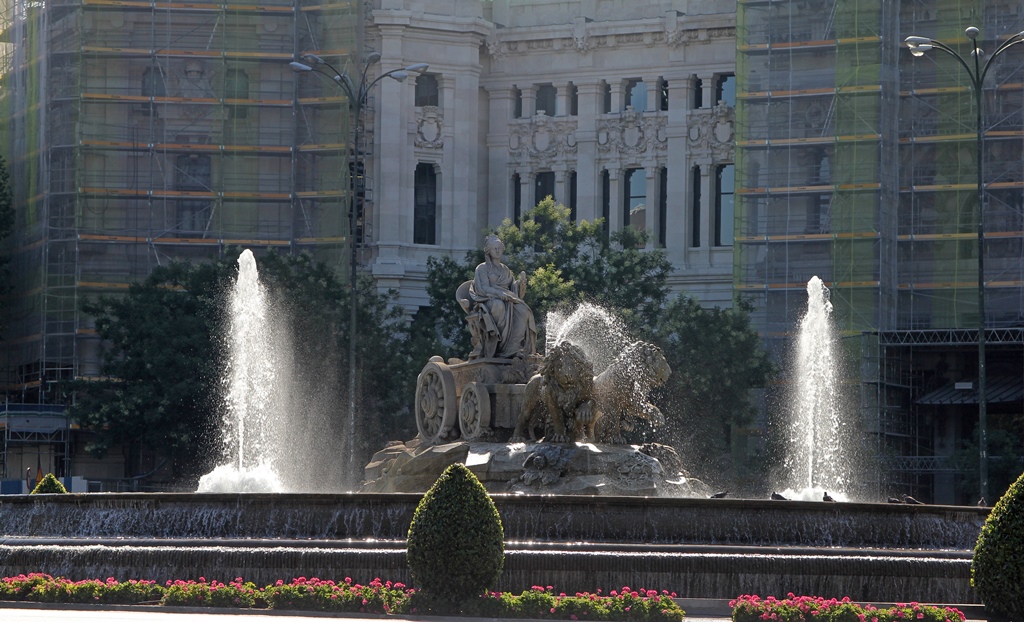
Fountain, Plaza de Cibeles

Plaza de Cibeles
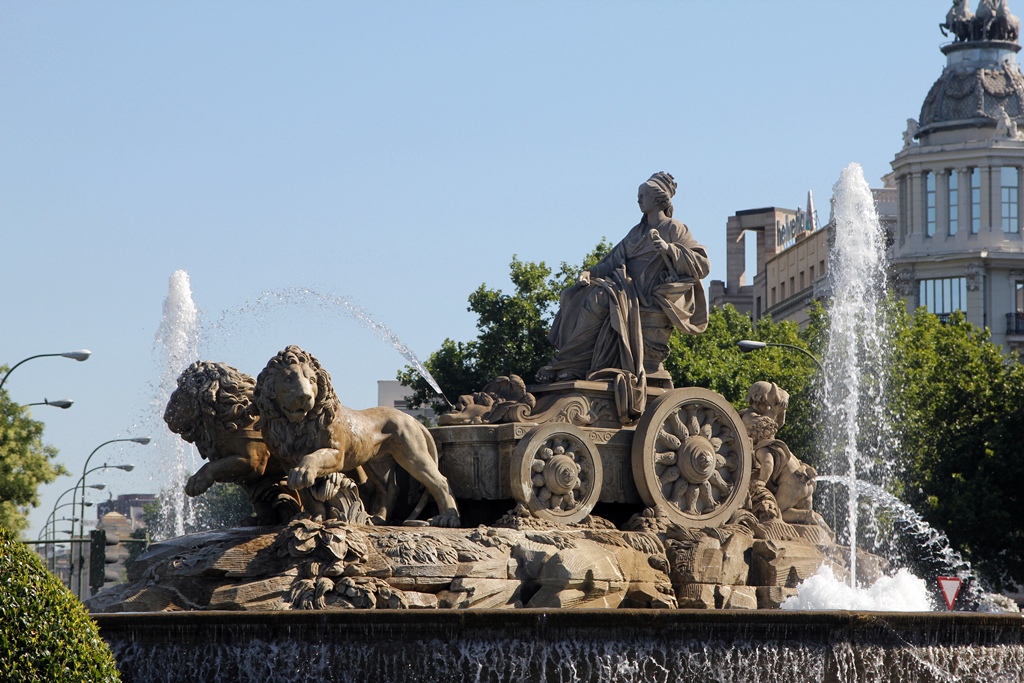
Fountain, Plaza de Cibeles
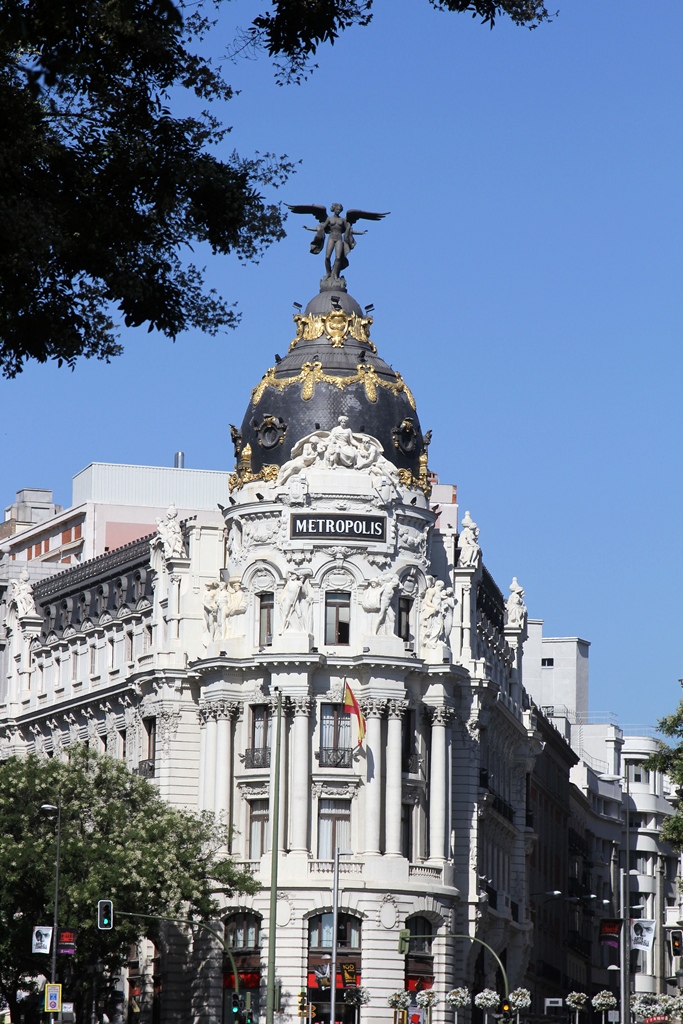
Metropolis Building from Plaza de Cibeles
From the Plaza we walked south along the Paseo del Prado, eventually arriving at the
Museo Nacional del Prado.
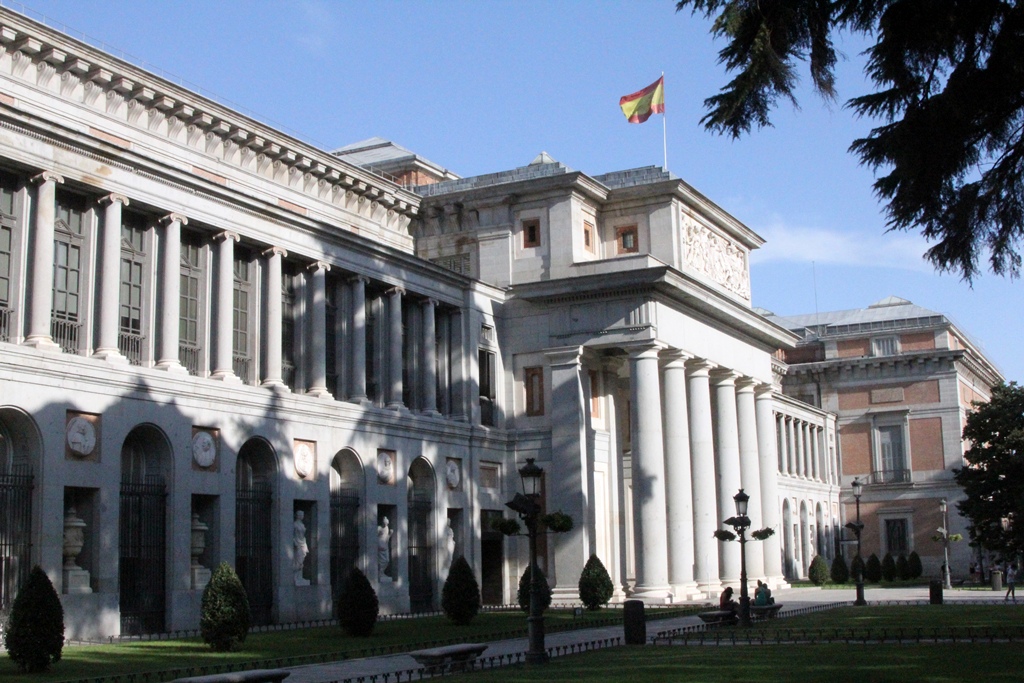
Front of Museum
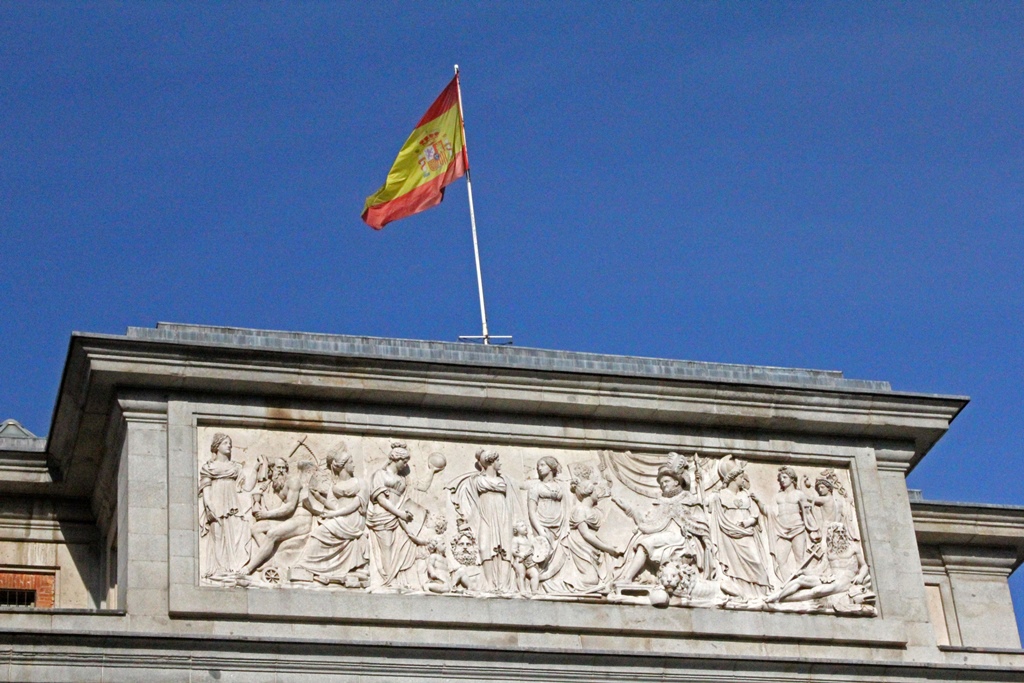
Flag and Relief
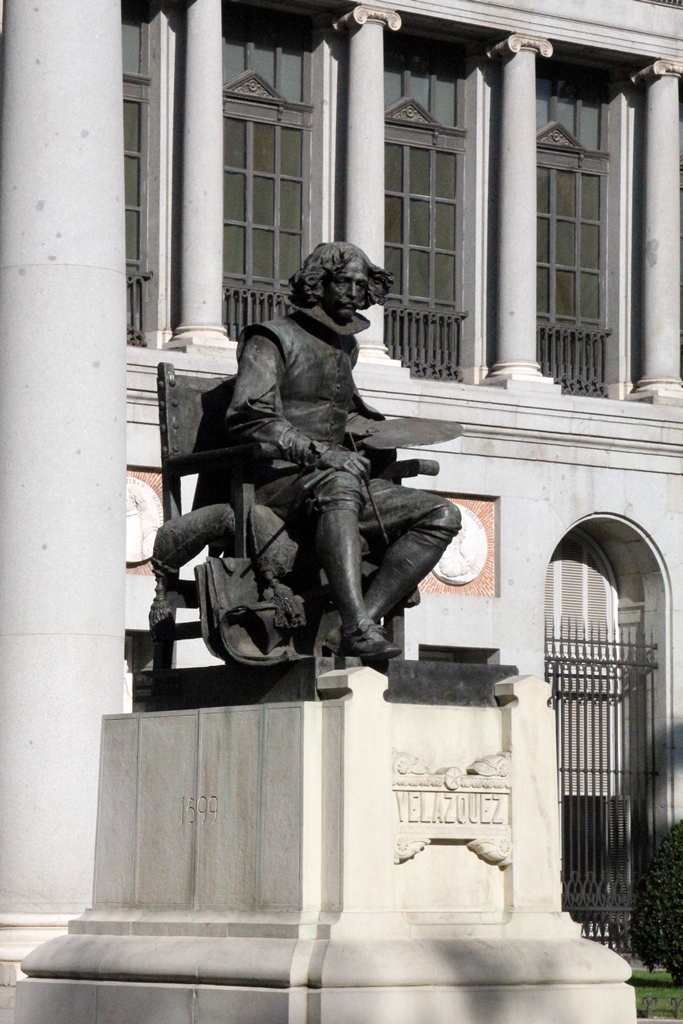
Statue of Diego Velázquez

Statue of Francisco de Goya
Construction of the Prado was begun in 1785 at the behest of King Charles III, who had a natural history exhibit space in mind. But
Charles died in 1788 and work on the building was suspended for a number of years, during which the troops of Napoleon came and went
(using the unfinished building as a cavalry headquarters and gunpowder store). The building was completed under Charles' grandson,
Ferdinand VII, who had a different idea, opening the building as a new Royal Museum of Paintings and Sculptures in 1819. The museum
began with the royal art collection and expanded with many acquisitions over the years. It also acquired the name "Museo del Prado"
in 1868, prado being a Spanish word meaning field or meadow, referring to the terrain on which the building was constructed.
Museum Entrance
We entered the museum at the north end, and found that photography of any kind was not allowed. But fortunately for you, we'd visited
the museum once before in 2005, when this silly rule was different (still pictures OK but no video), so we're able to show you some
pictures from that visit. Don't be disoriented by pictures with Connie in them – she was with us (and five years younger) in 2005,
but not in 2010.
The Prado collection is clearly world class, with masterpieces from artists throughout Europe.
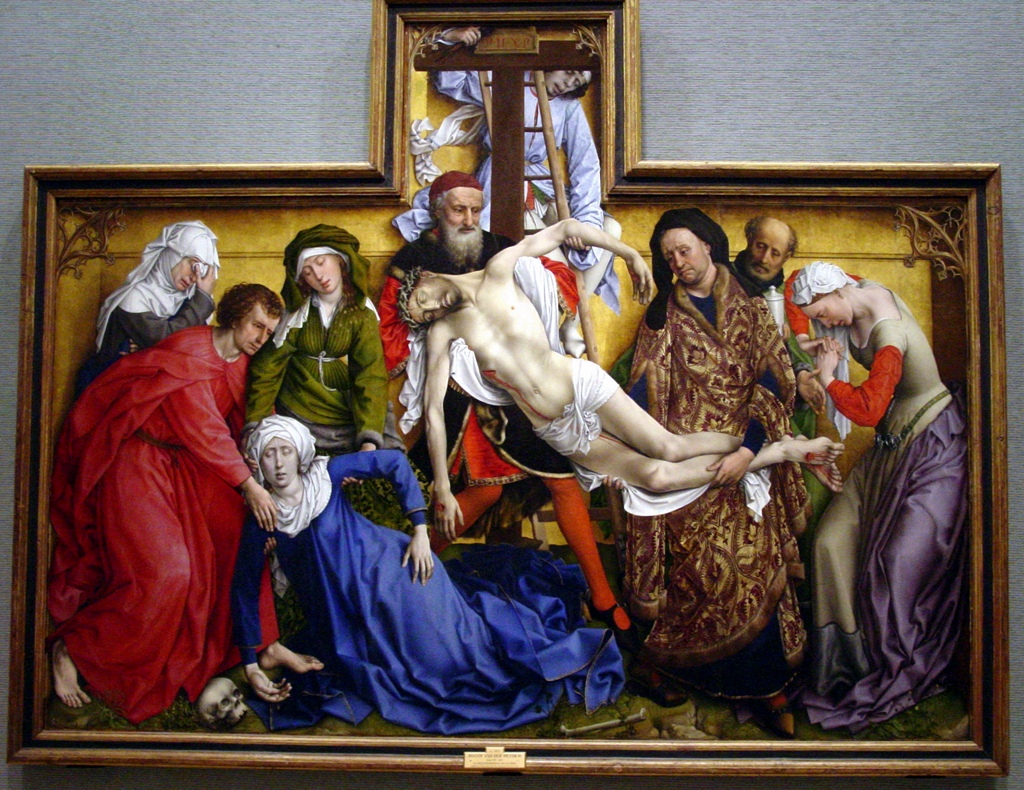
The Descent from the Cross, Roger van der Weyden (ca. 1435)
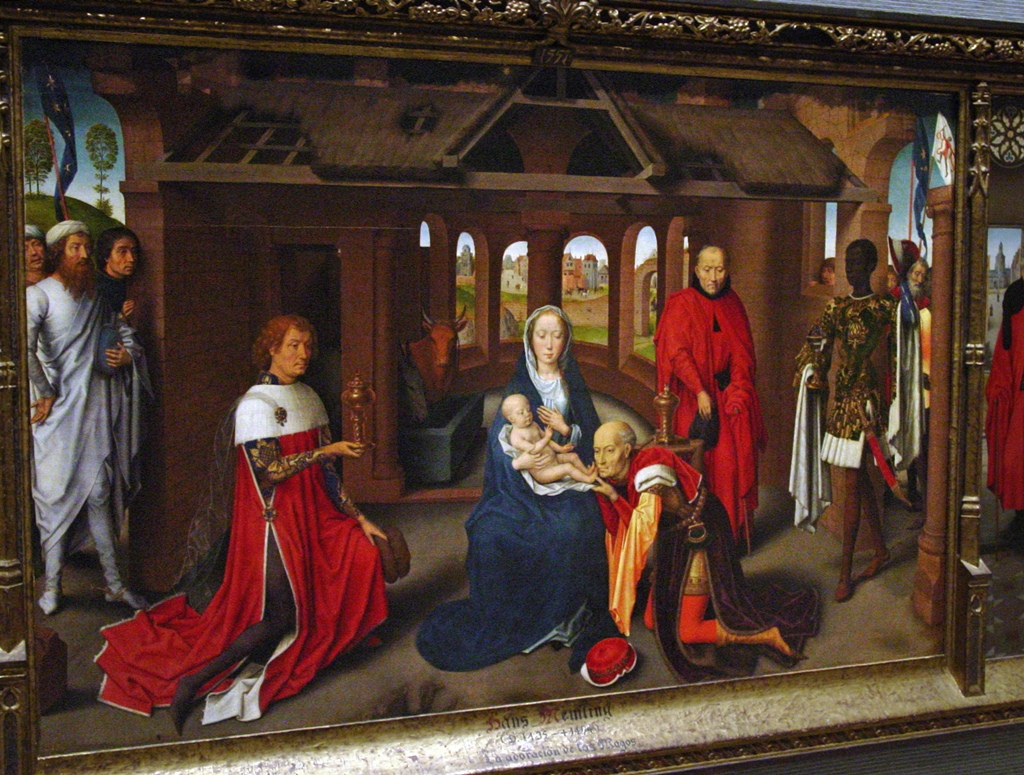
The Adoration of the Magi, Hans Memling (1470)
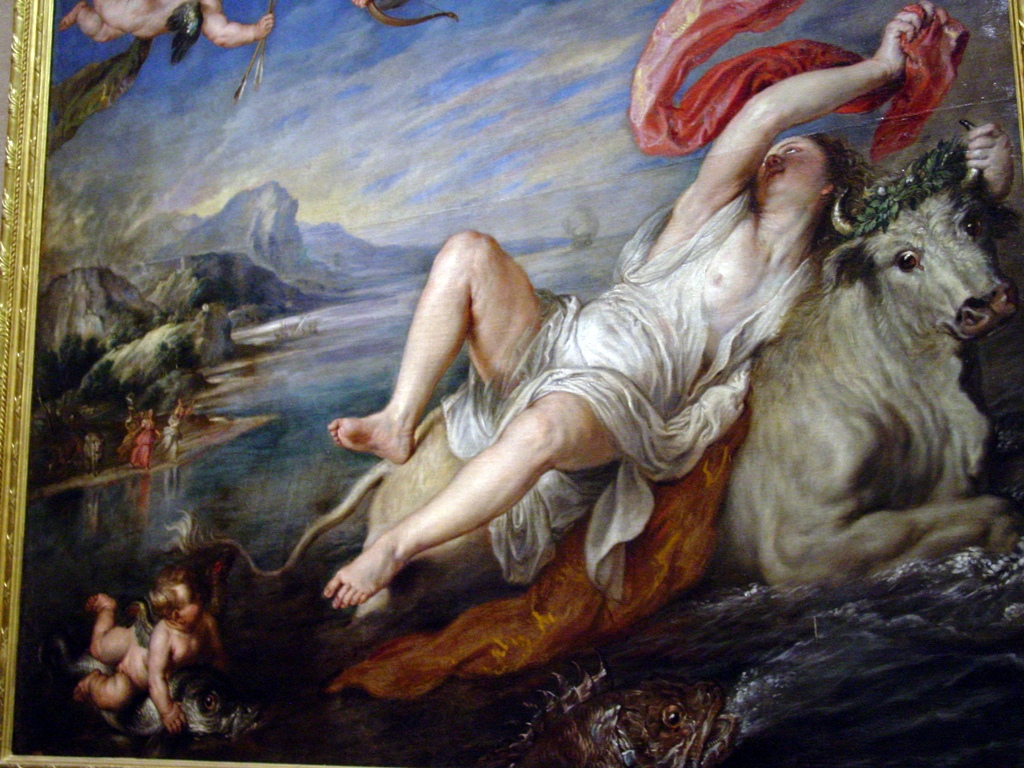
The Rape of Europa, Peter Paul Rubens (1628-29)
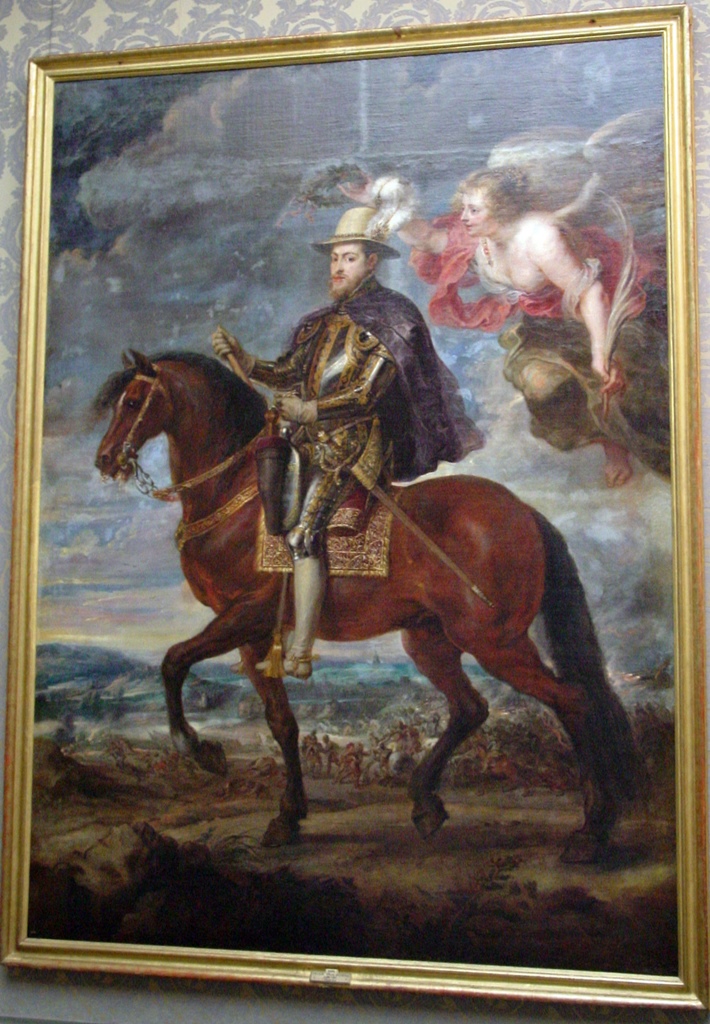
Philip II on Horseback, Peter Paul Rubens (1628)
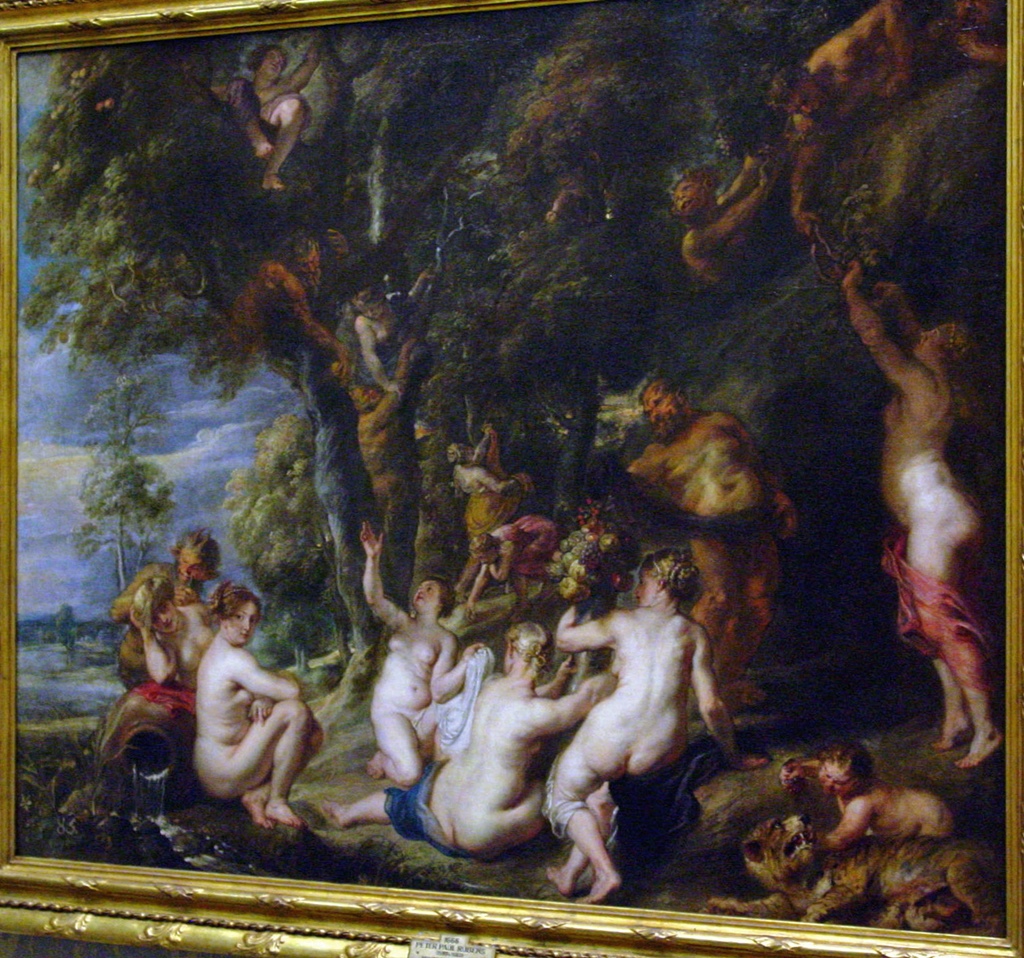
Nymphs and Satyrs, Peter Paul Rubens (ca. 1635)
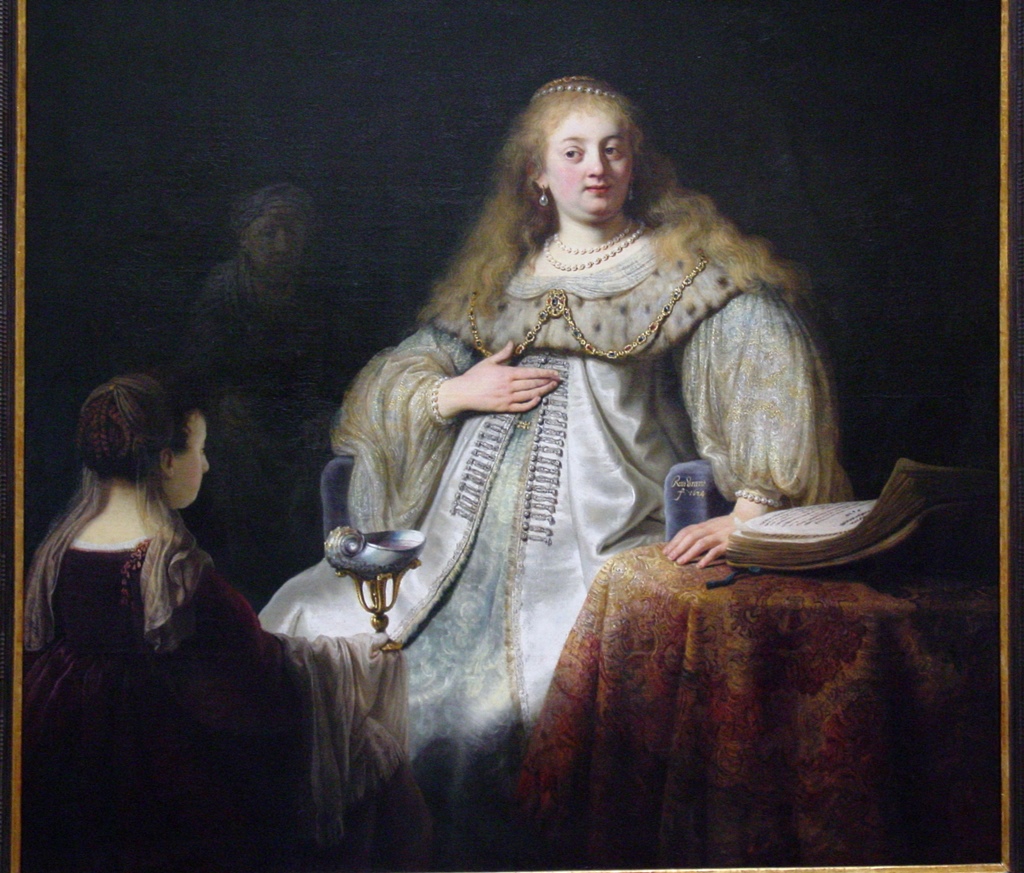
Artemisia, Rembrandt van Rijn (1634)
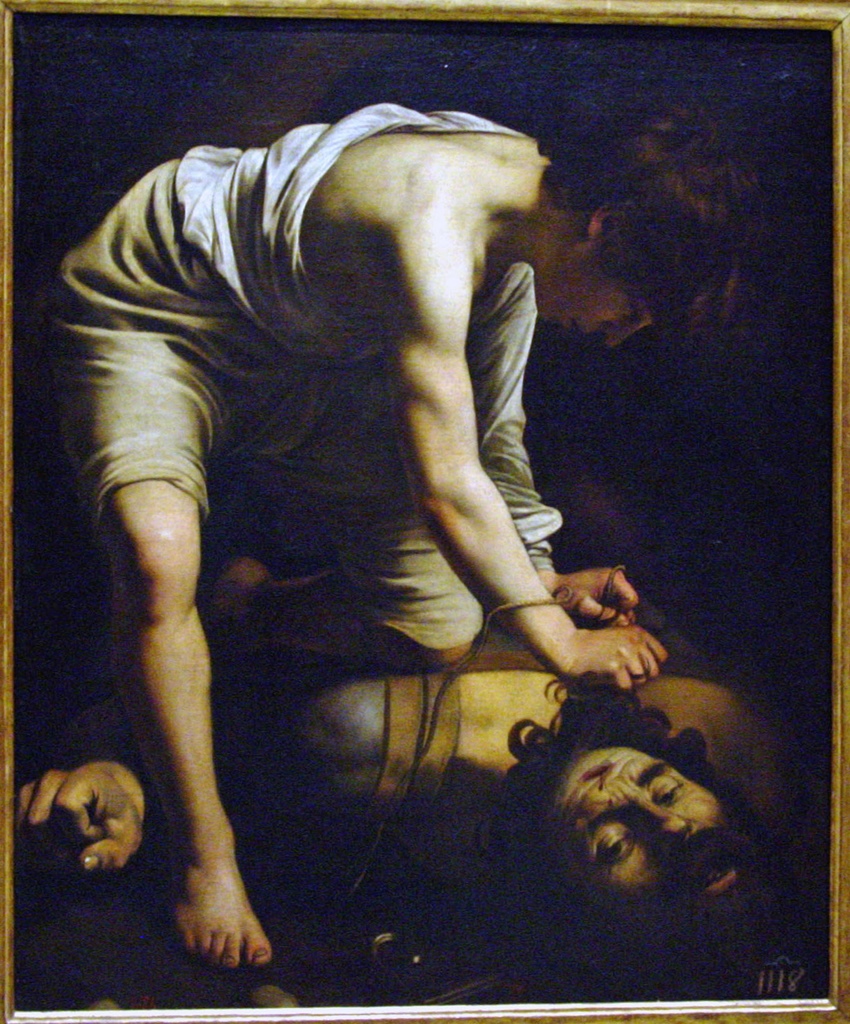
David Defeating Goliath, Caravaggio (1599-1600)
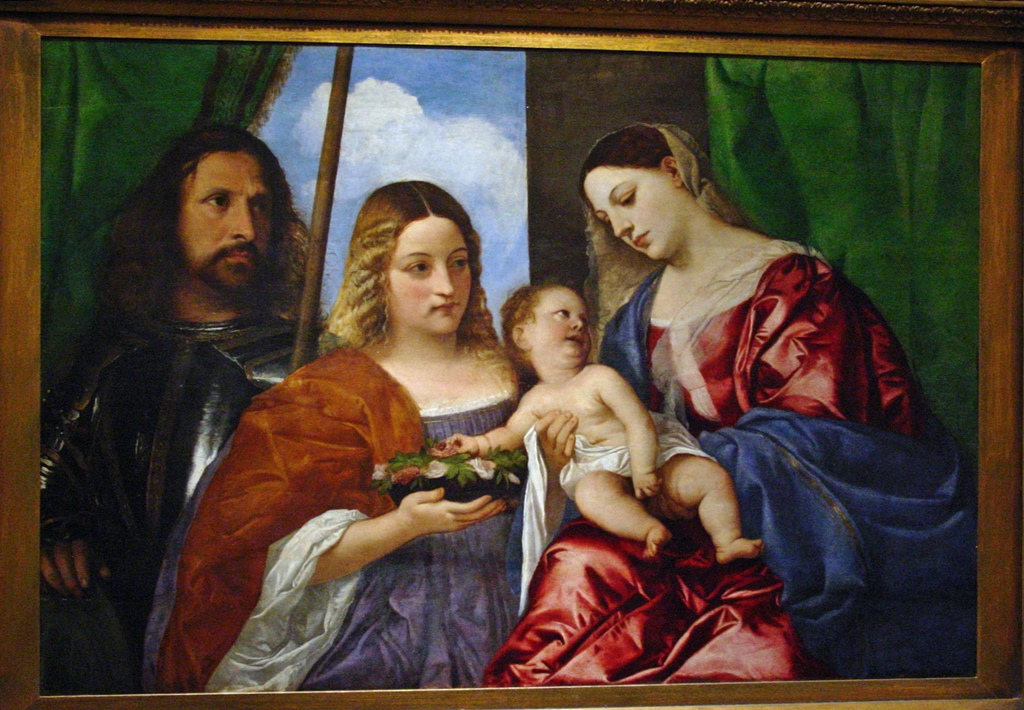
The Virgin and Child with St. Catherine and St. George, Titian (1515)
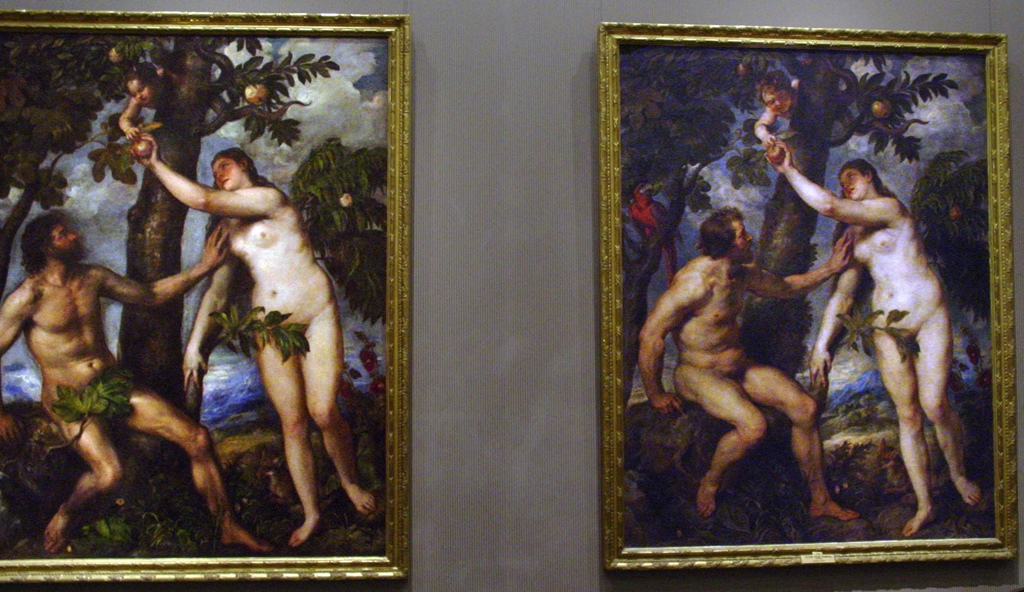
Adam and Eve, Titian (1560) and Peter Paul Rubens (1628)
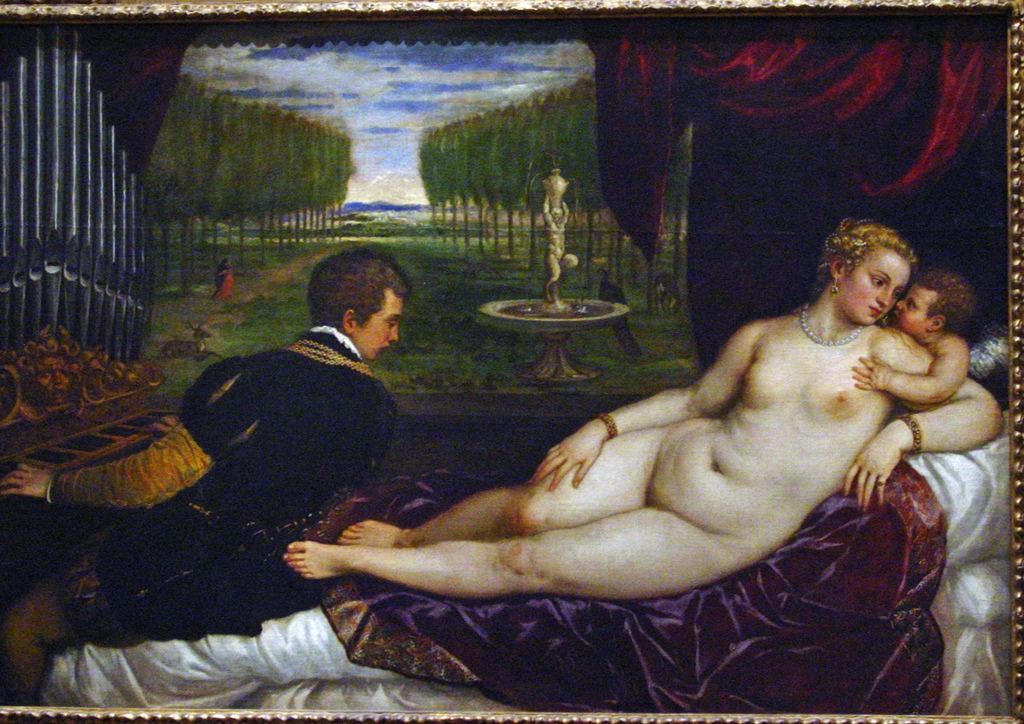
Venus, Love and Music, Titian (1540-50)
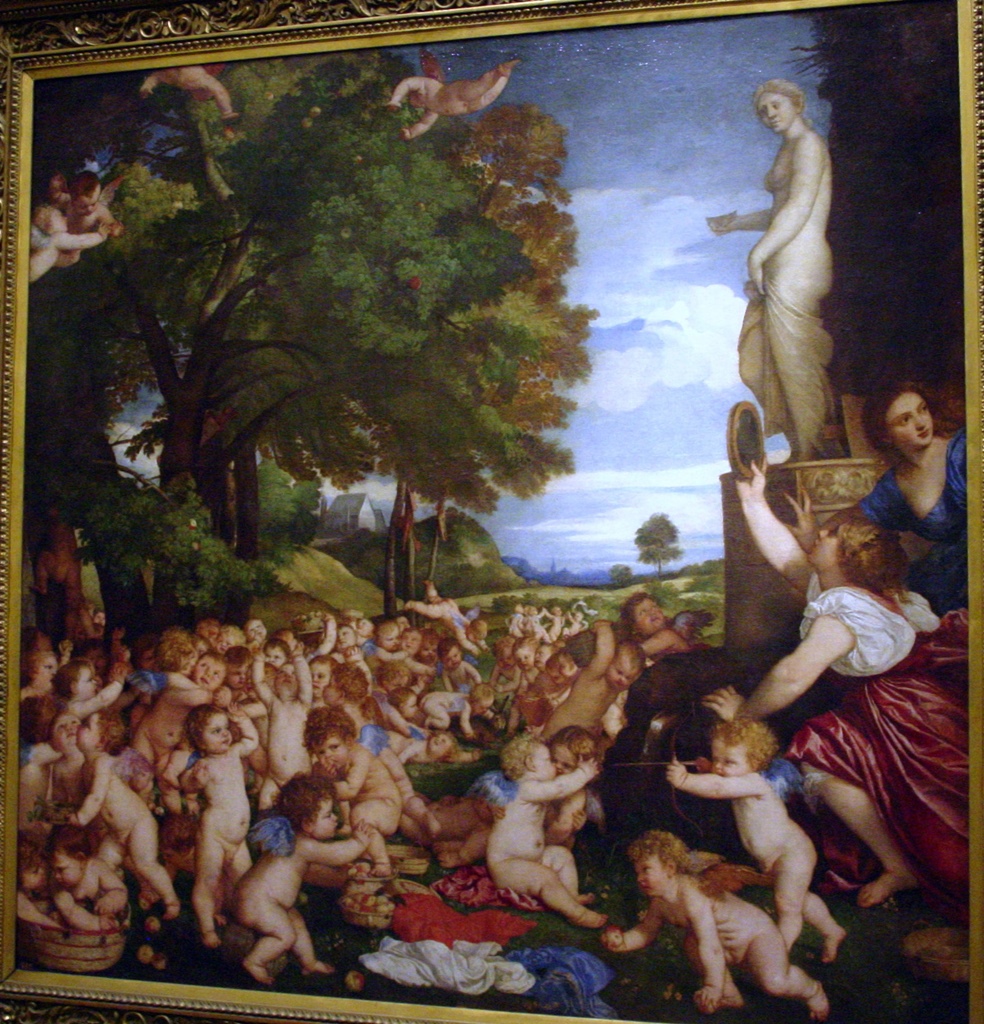
Garden of Love or Worship of Venus, Titian (1518-19)
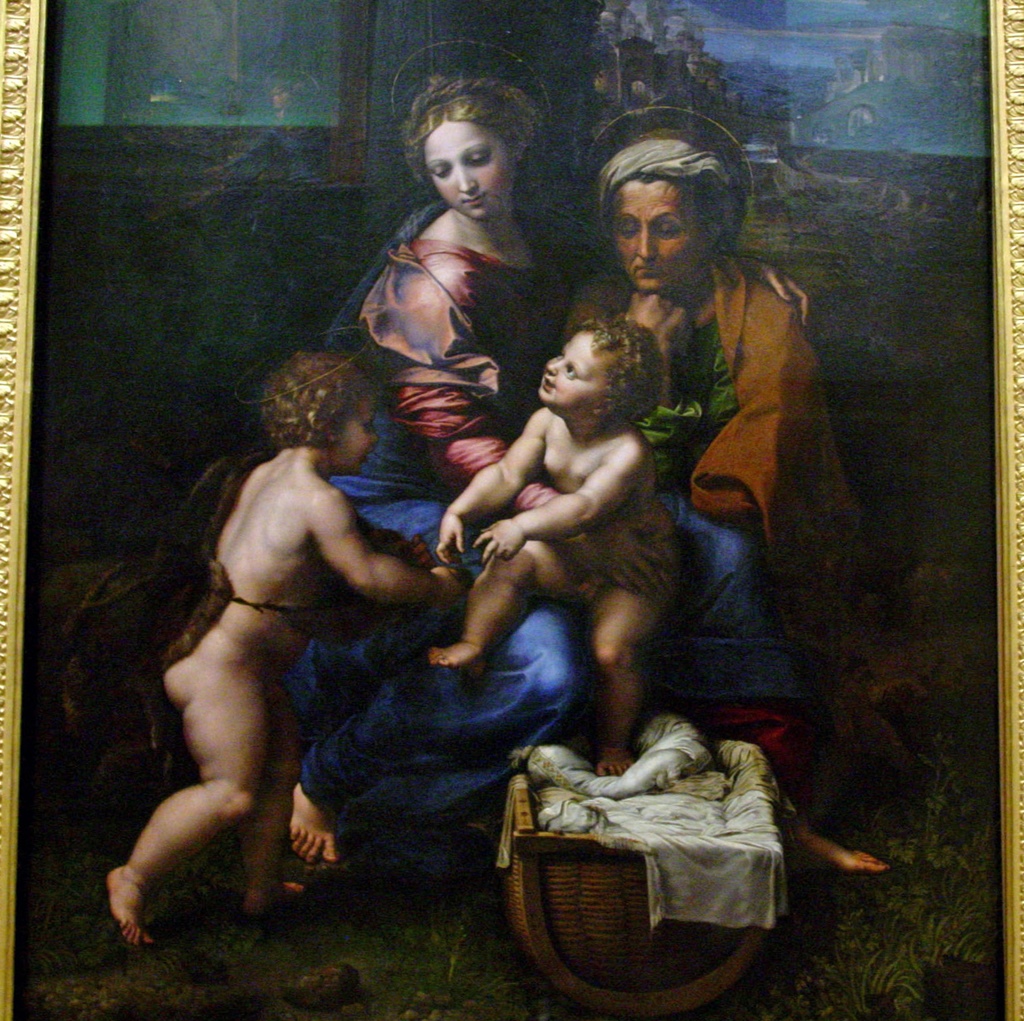
Holy Family of the Pearls, Raphael (ca. 1518)
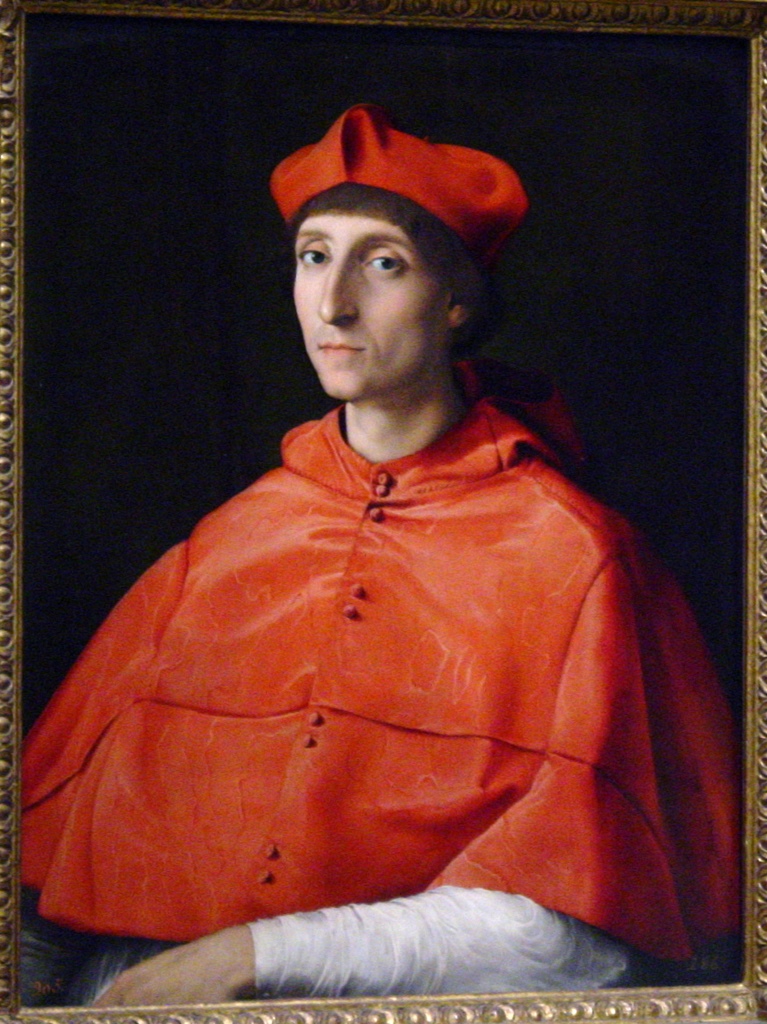
Portrait of a Cardinal, Raphael (c. 1510)
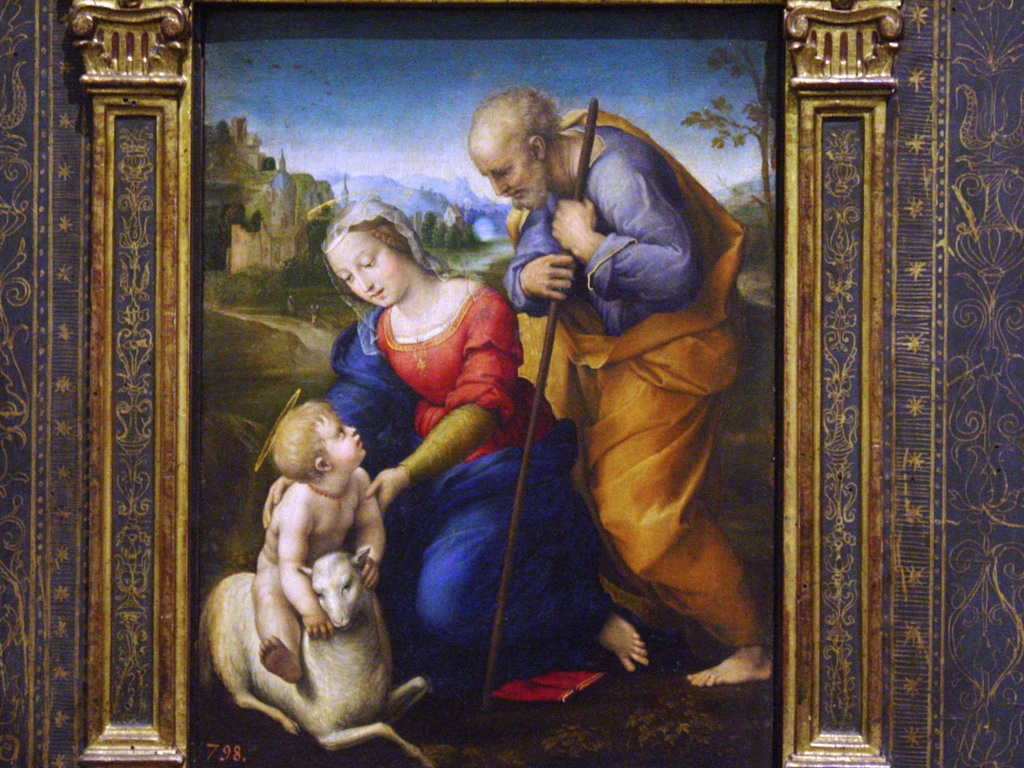
The Holy Family of the Lamb, Raphael (1507)
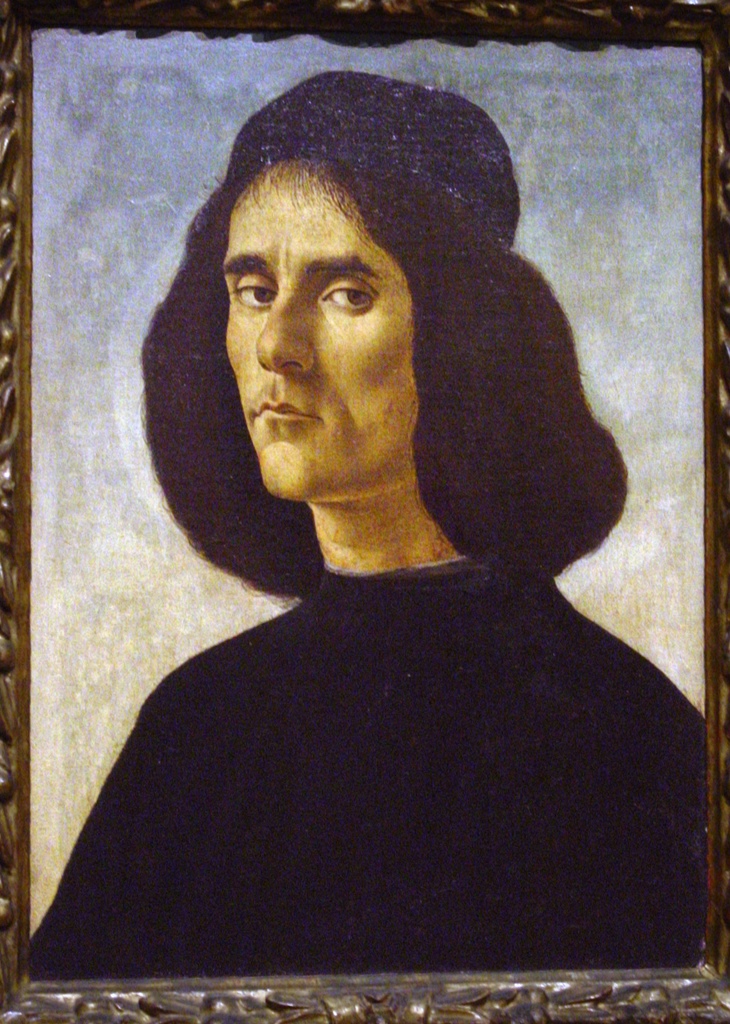
Portrait of a Man, Sandro Botticelli (1489-94)
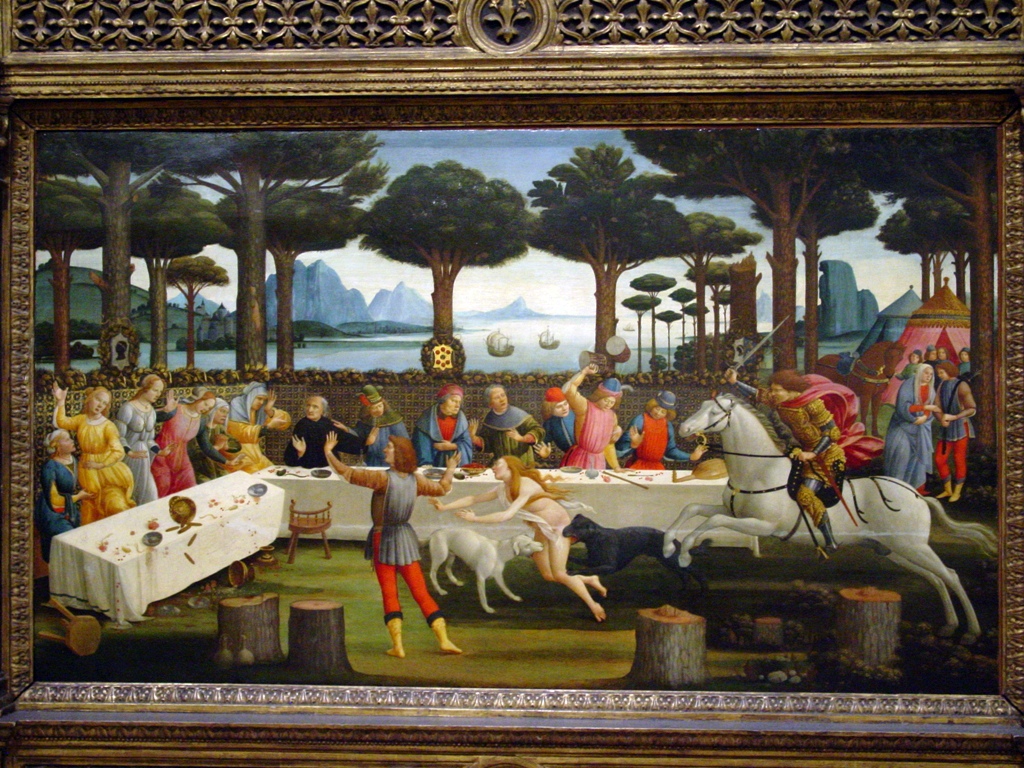
The Story of Nastagio Degli Onesti (panel 3), Sandro Botticelli (1483)
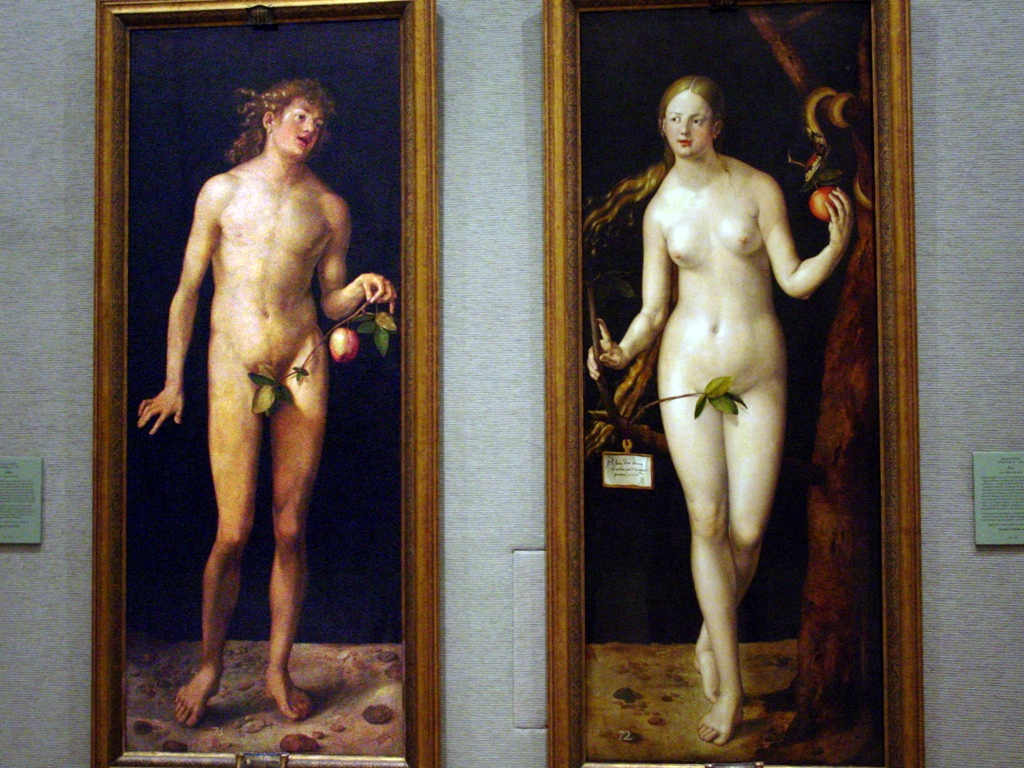
Adam and Eve, Albrecht Dürer (1507)
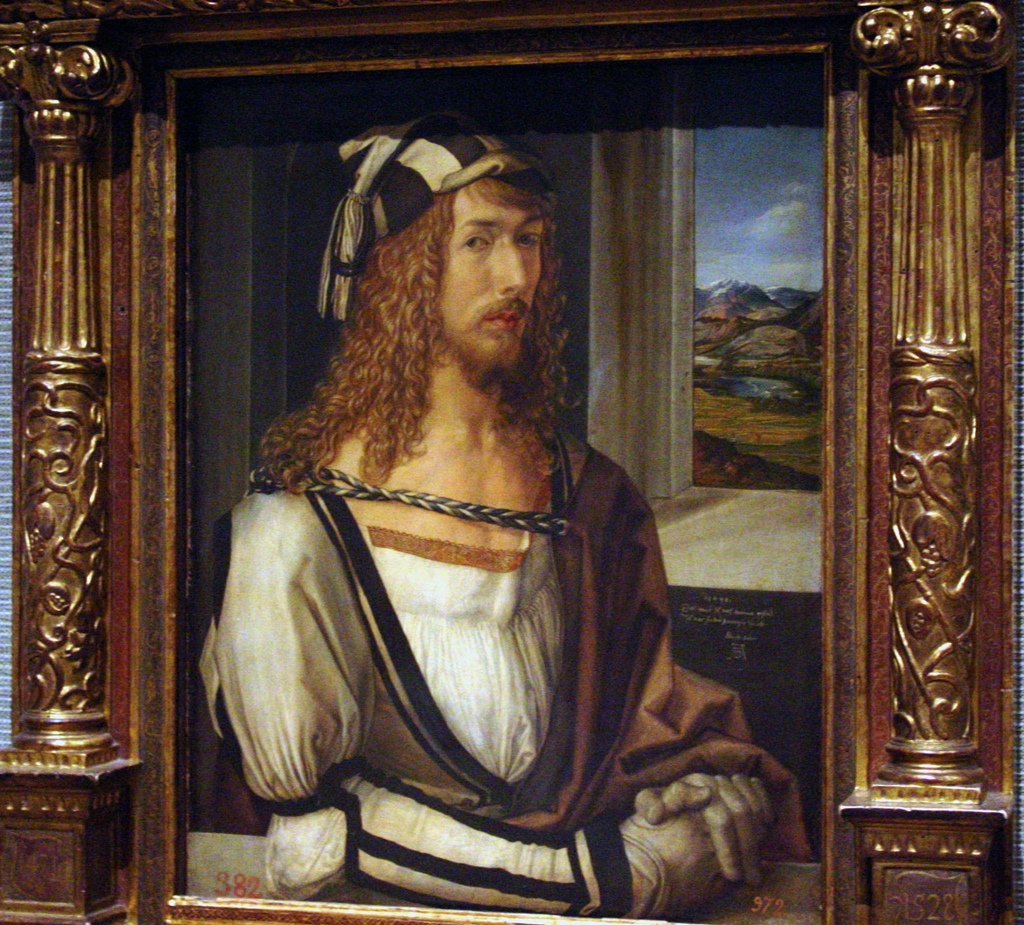
Self-Portrait, Albrecht Dürer (1498)
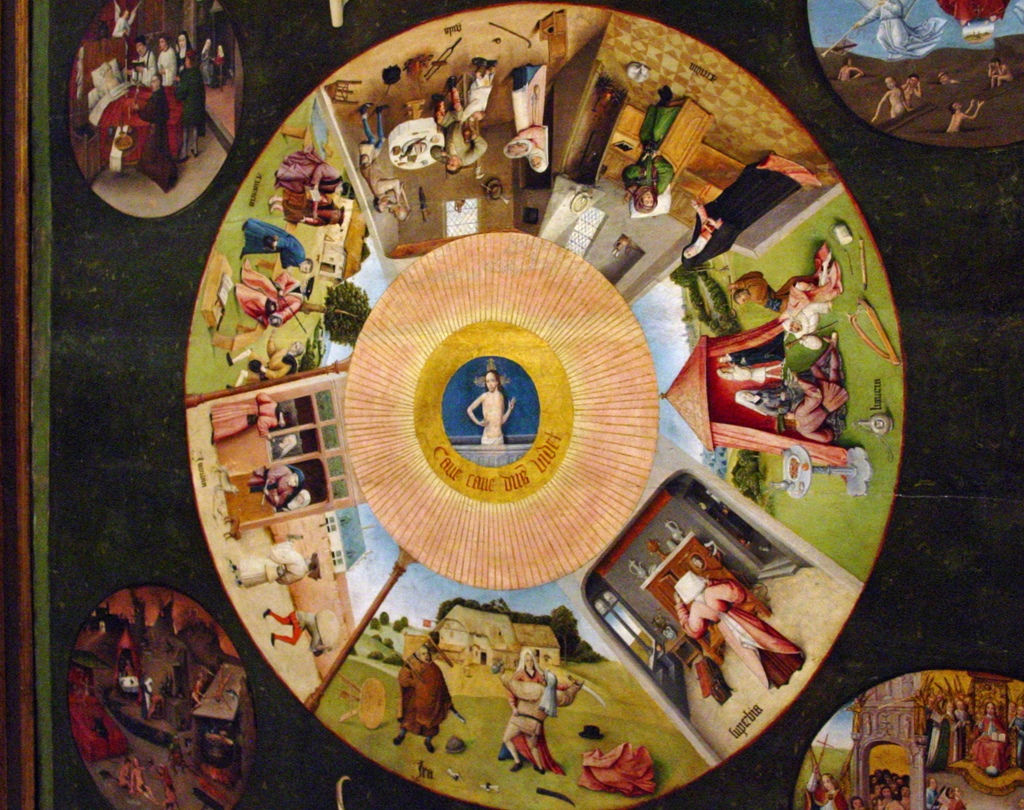
The Table of the Seven Deadly Sins, Hieronymous Bosch (1480-1500)
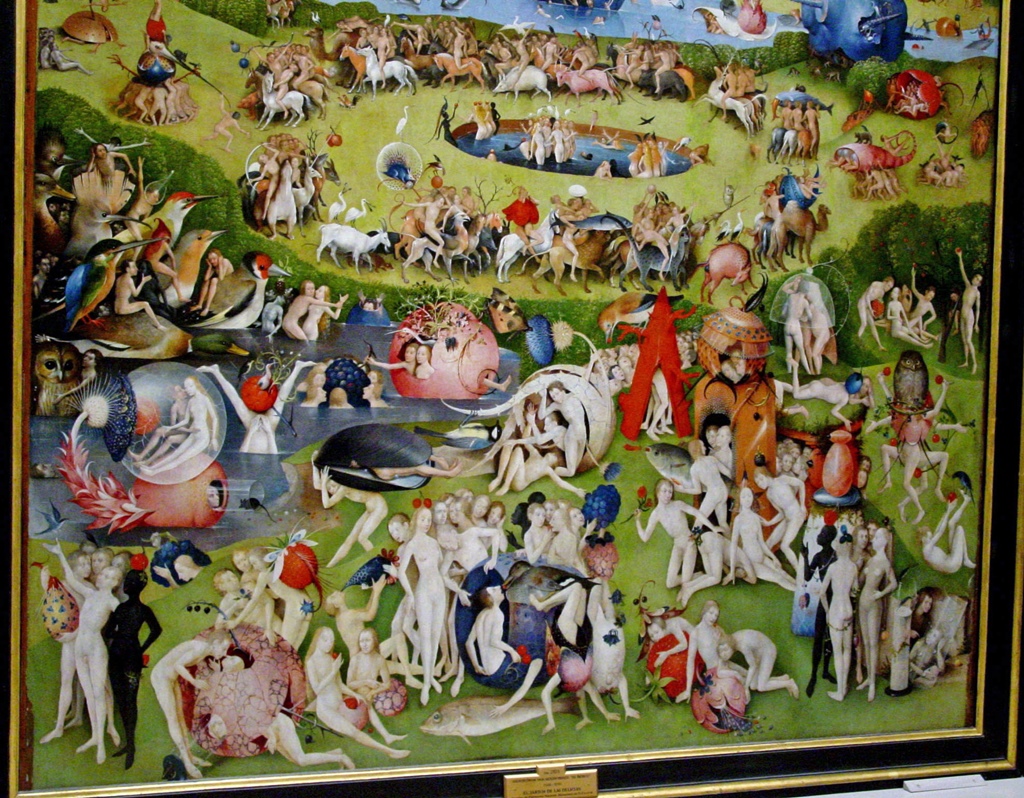
The Garden of Earthly Delights (central panel), Hieronymous Bosch (1500)
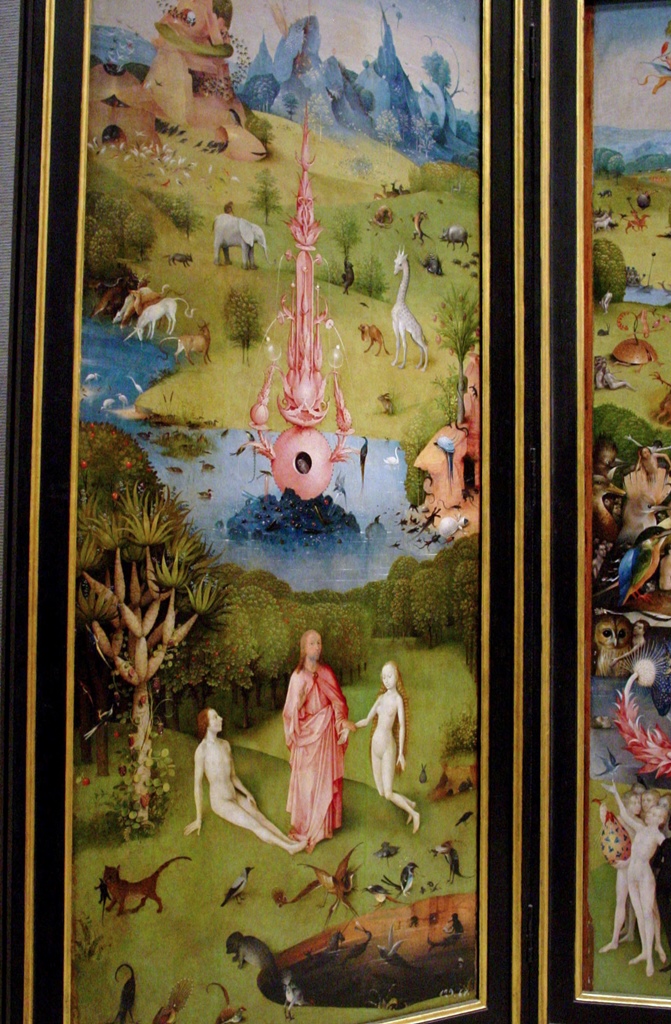
The Garden of Earthly Delights (Paradise panel), Hieronymous Bosch (1500)
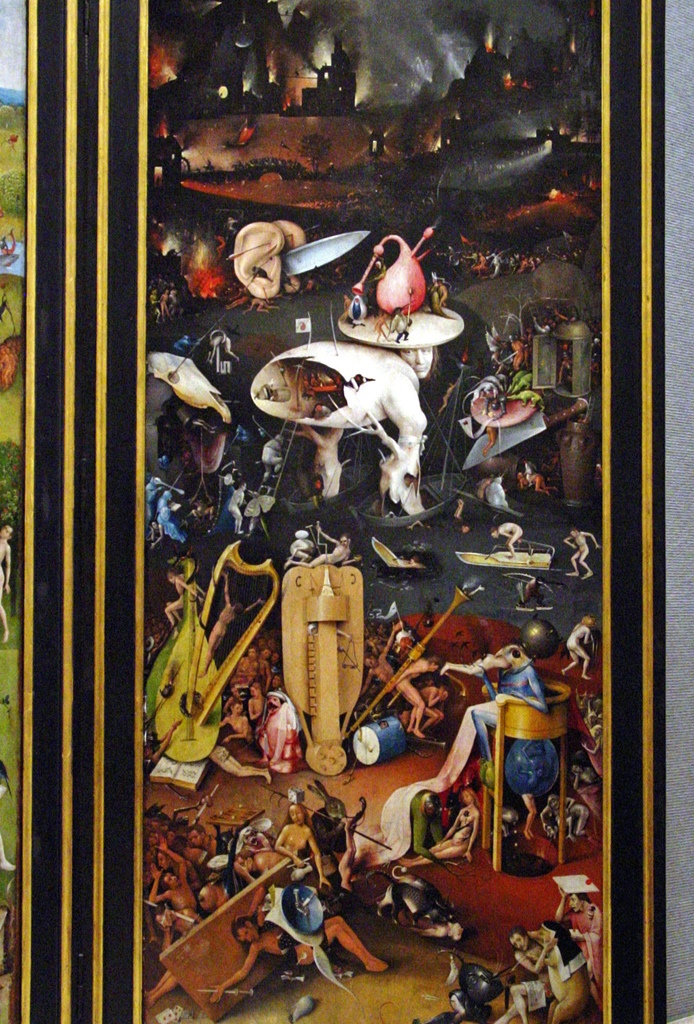
The Garden of Earthly Delights (Hell panel), Hieronymous Bosch (1500)
The Adoration of the Magi, Pieter Coecke van Aelst (16th C.)
Special attention is paid to Spanish artists, with extensive representation of artists like Diego Velázquez, El Greco and Francisco de Goya.
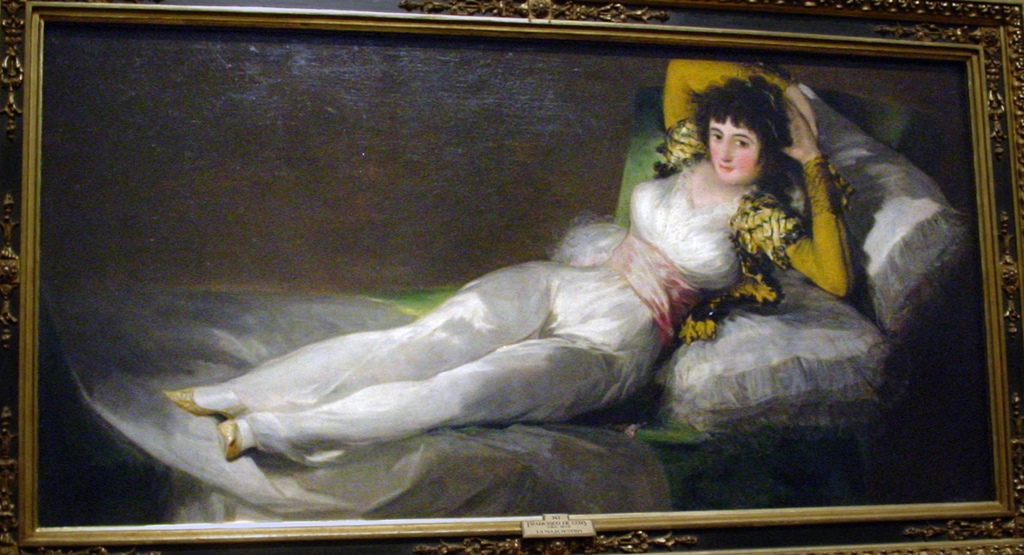
The Clothed Maja, Francisco de Goya (c. 1797)
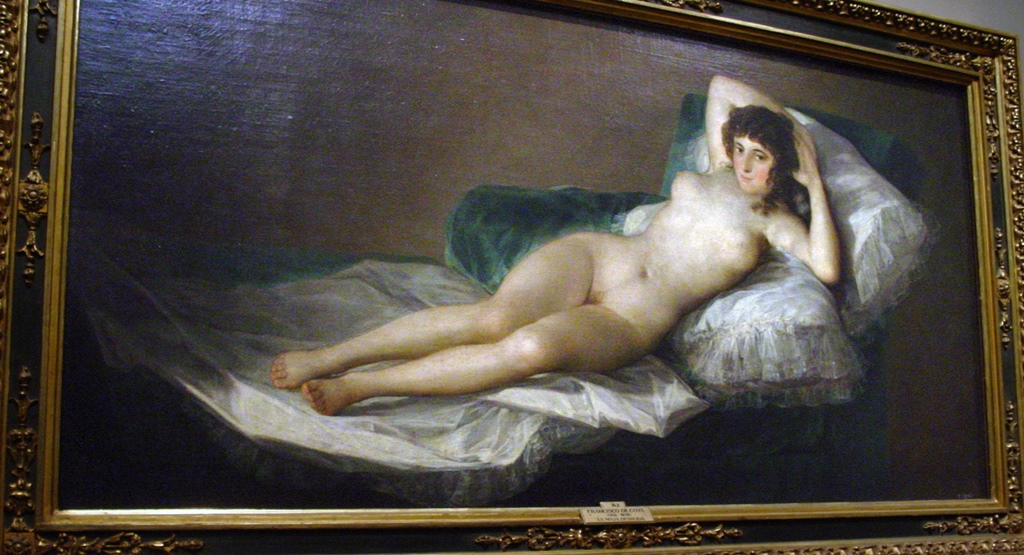
The Naked Maja, Francisco de Goya (c. 1797)
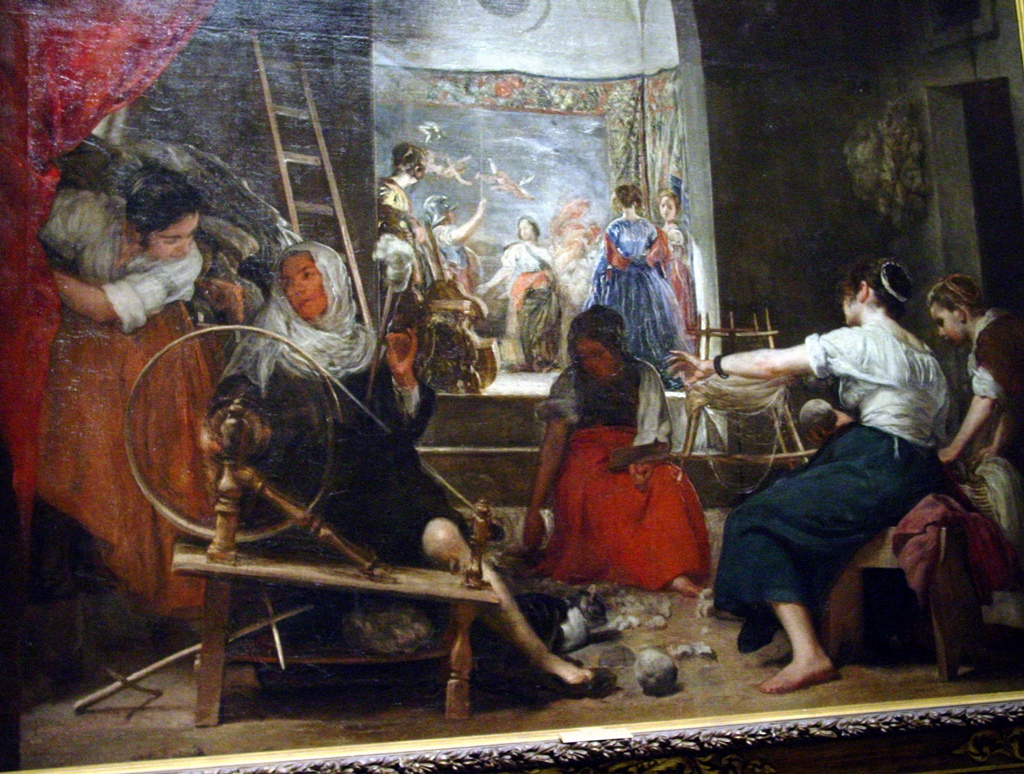
The Spinners or The Fable of Arachne, Diego Velázquez (1657)
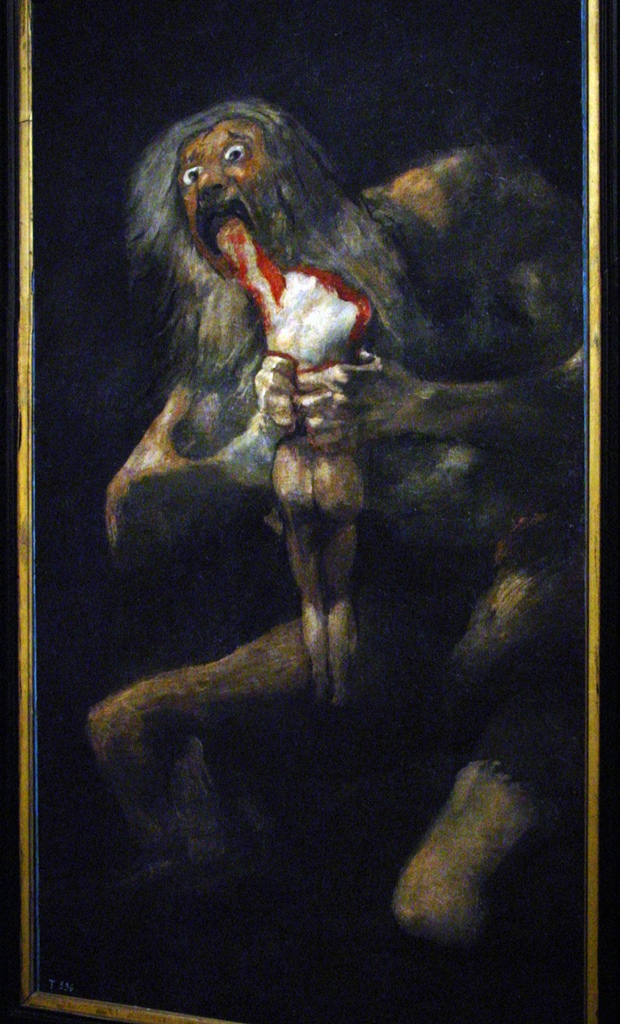
Saturn Devouring One of his Sons, Francisco de Goya (1819)
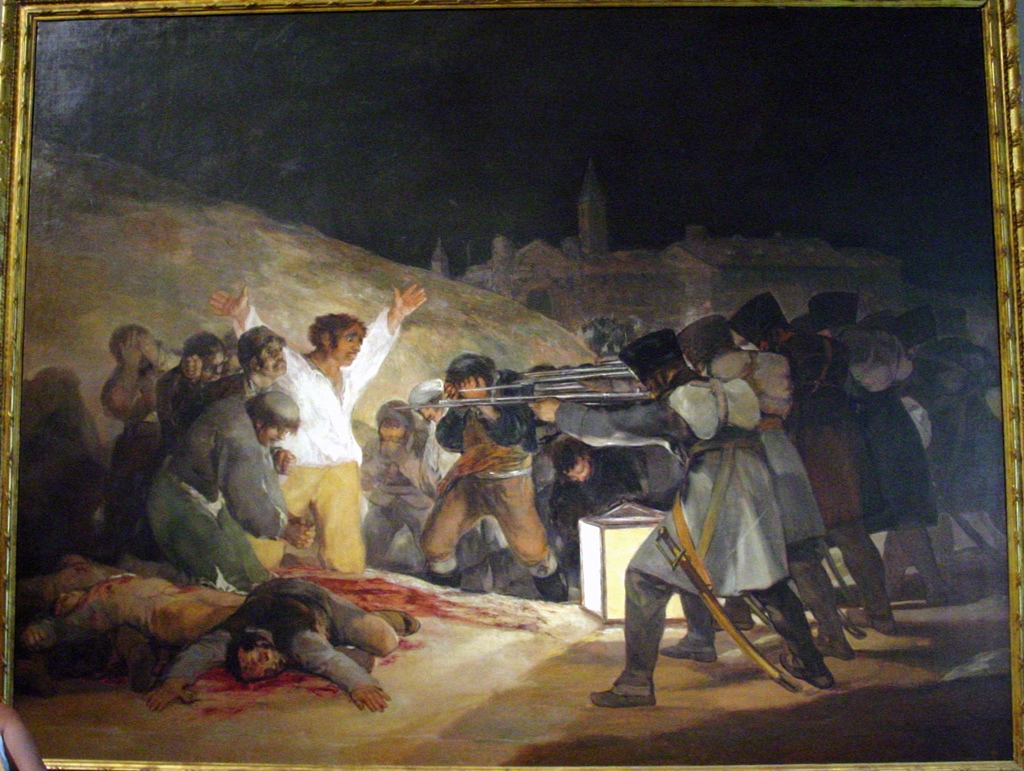
The 3rd of May 1808 in Madrid: The Executions at Principe Pio, Francisco de Goya (1814)
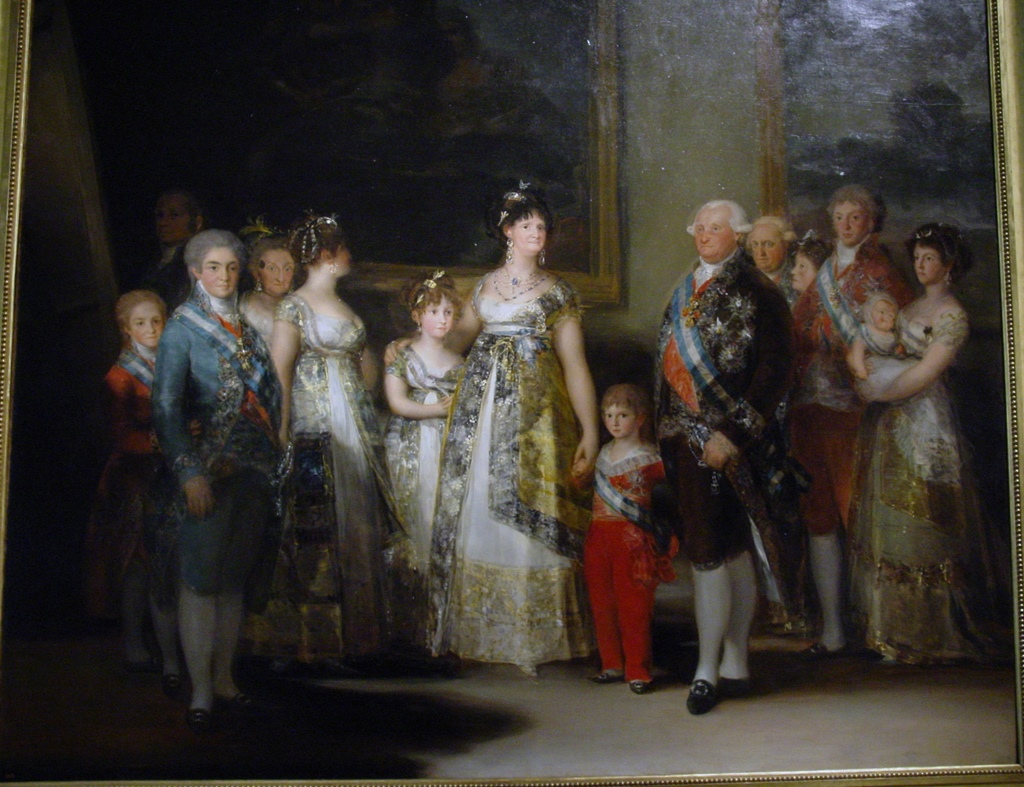
Charles IV and his Family, Francisco de Goya (1800)
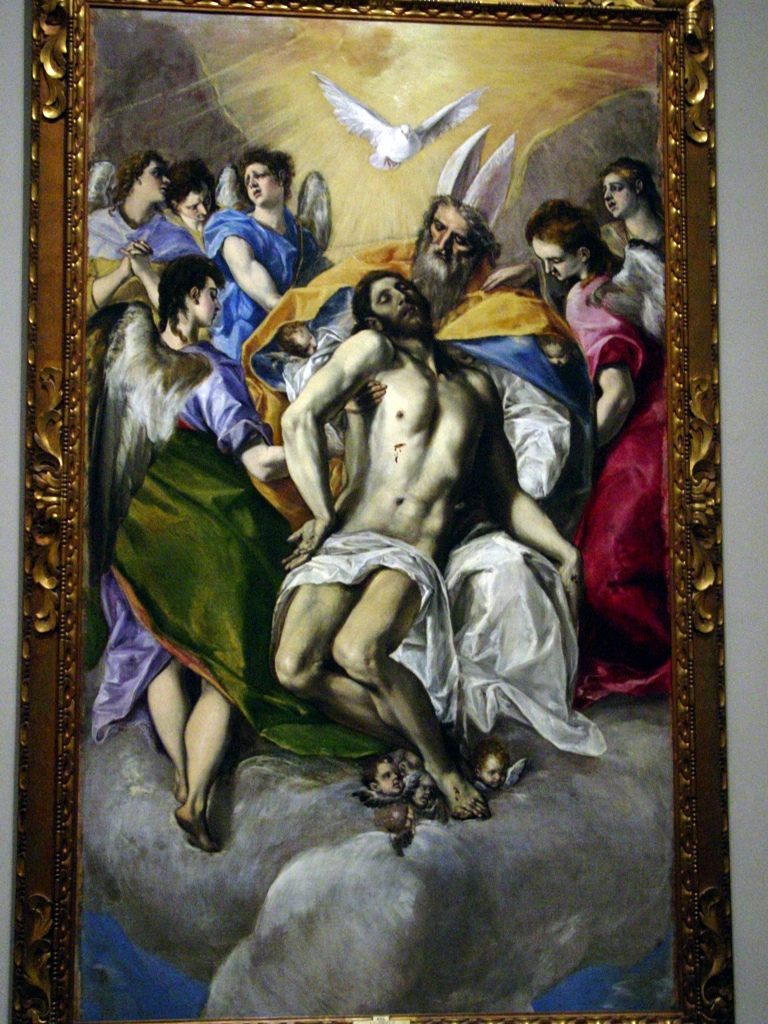
The Holy Trinity, El Greco (1577-79)
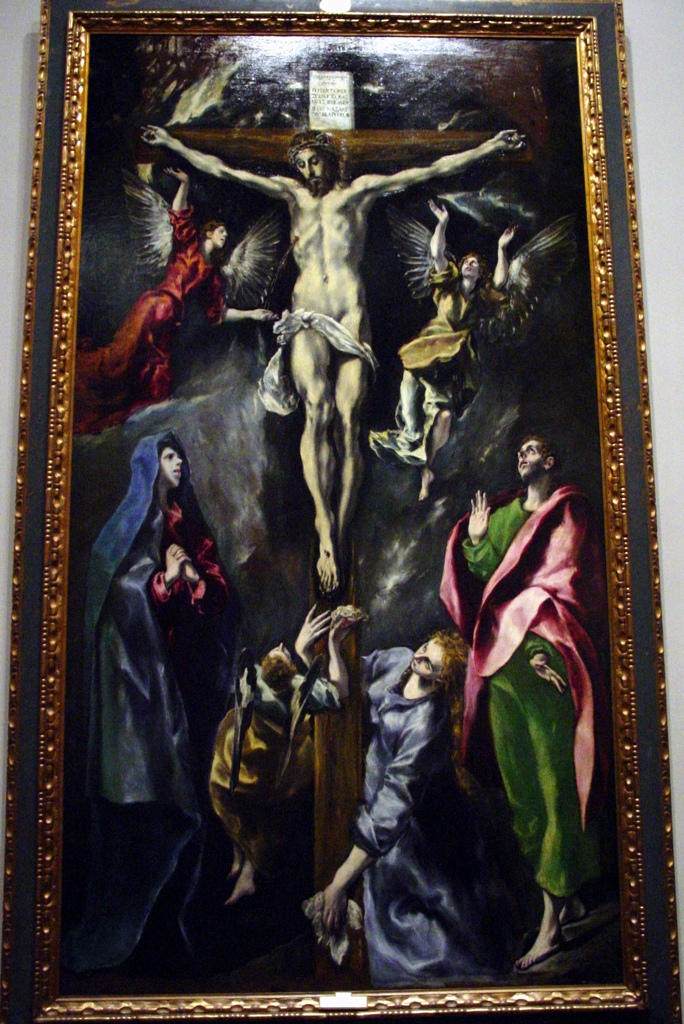
The Crucifixion, El Greco (1595-1600)
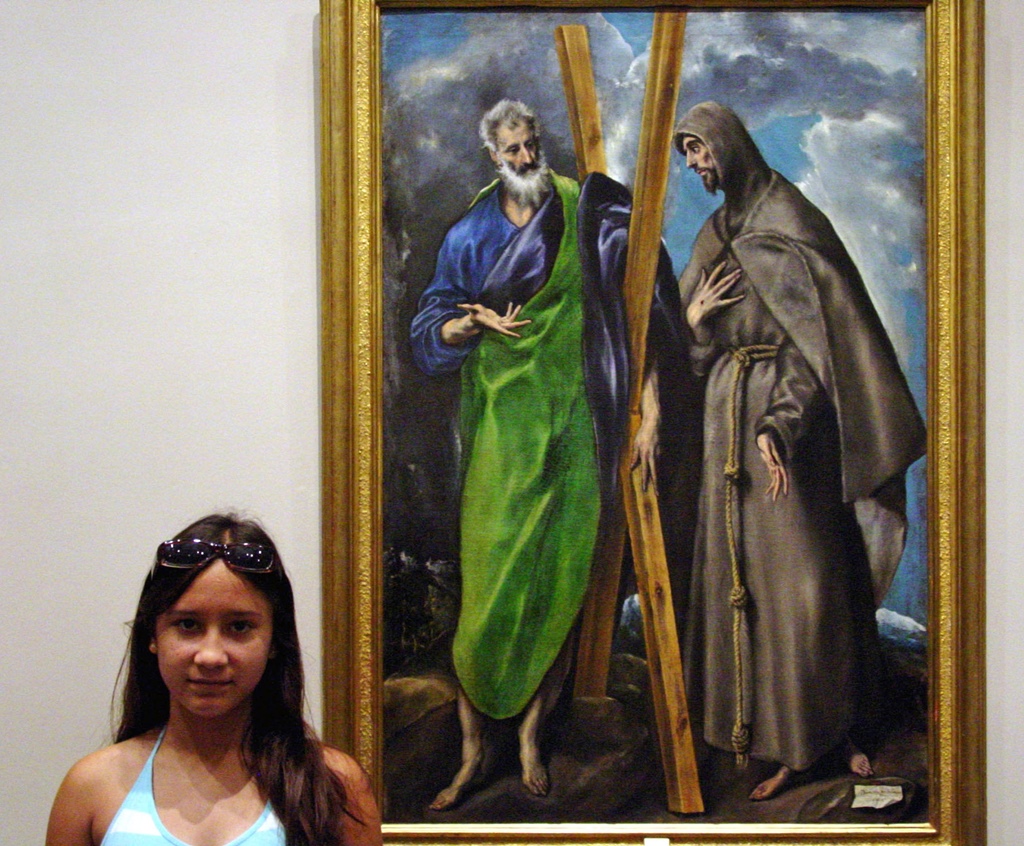
Connie with Saint Andrew and Saint Francis, El Greco (1590-95)
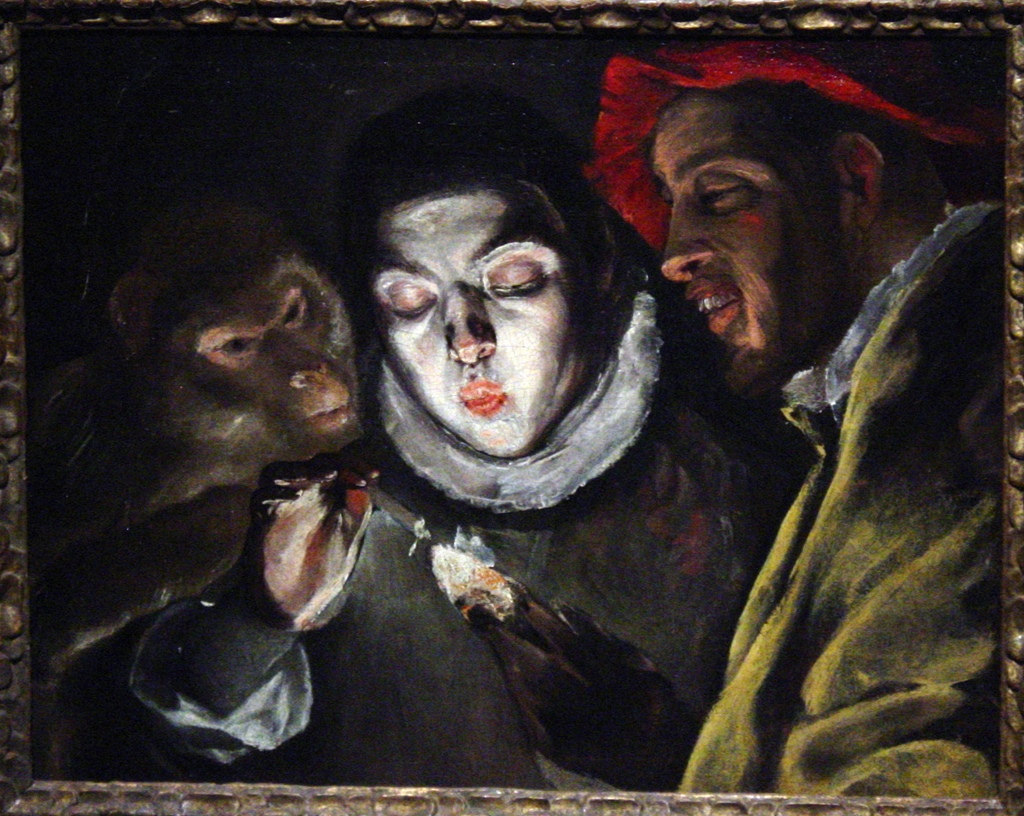
Allegory, El Greco (c. 1605)
The most well-known single painting in the museum is probably Velázquez's Las Meninas. This painting features a scene from the court of
Philip IV centered on the king's daughter Margaret Theresa (who grew up to marry her uncle and Holy Roman Emperor Leopold I before dying
at the age of 21), and also features Velázquez himself.
Connie with Las Meninas, Diego Velázquez (1656)
On finishing our visit we briefly looked across the street at the Palace Hotel, but turned east and headed for the nearby
Parque del Buen Retiro, to relax a little.
The Palace Hotel



